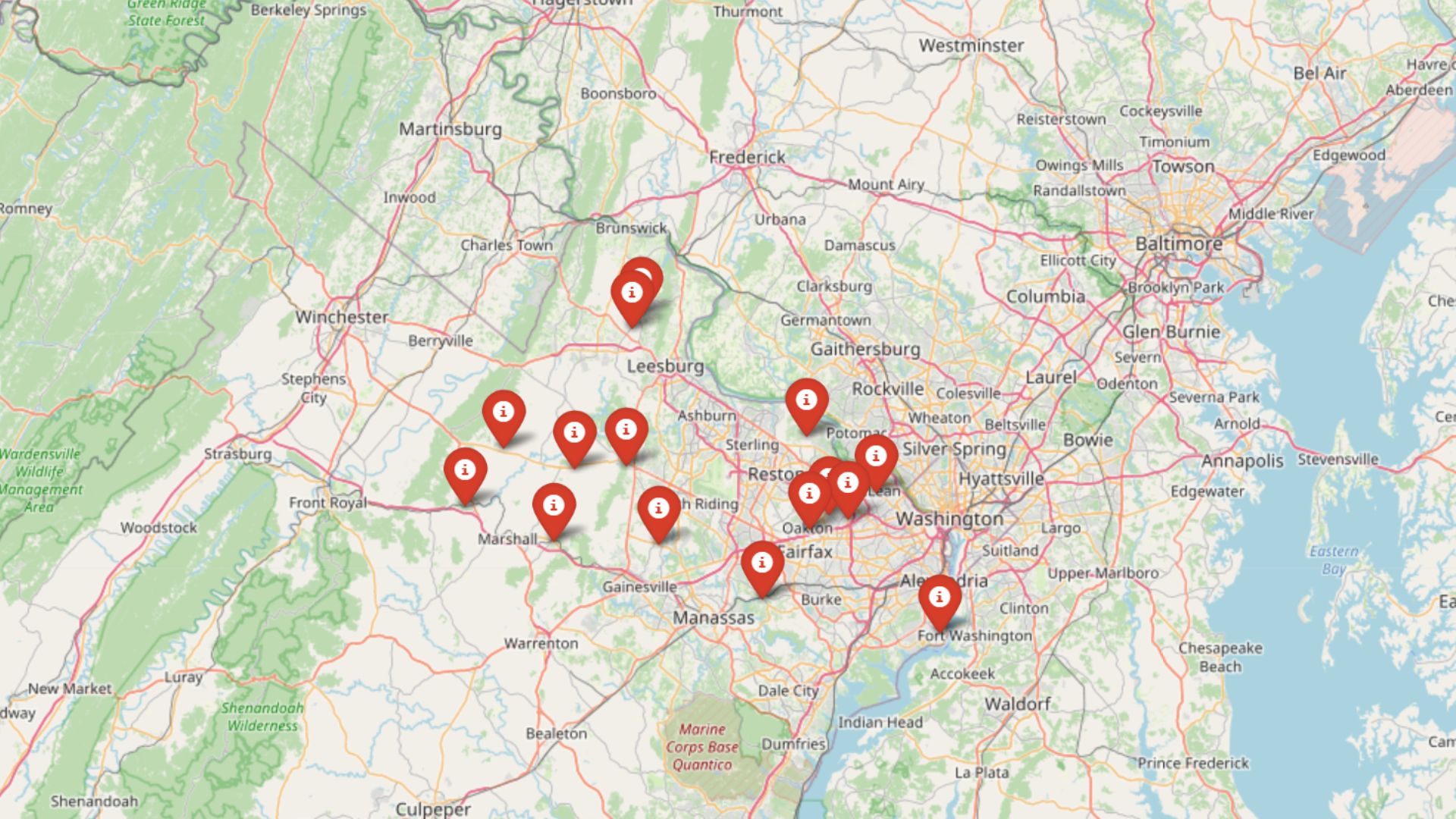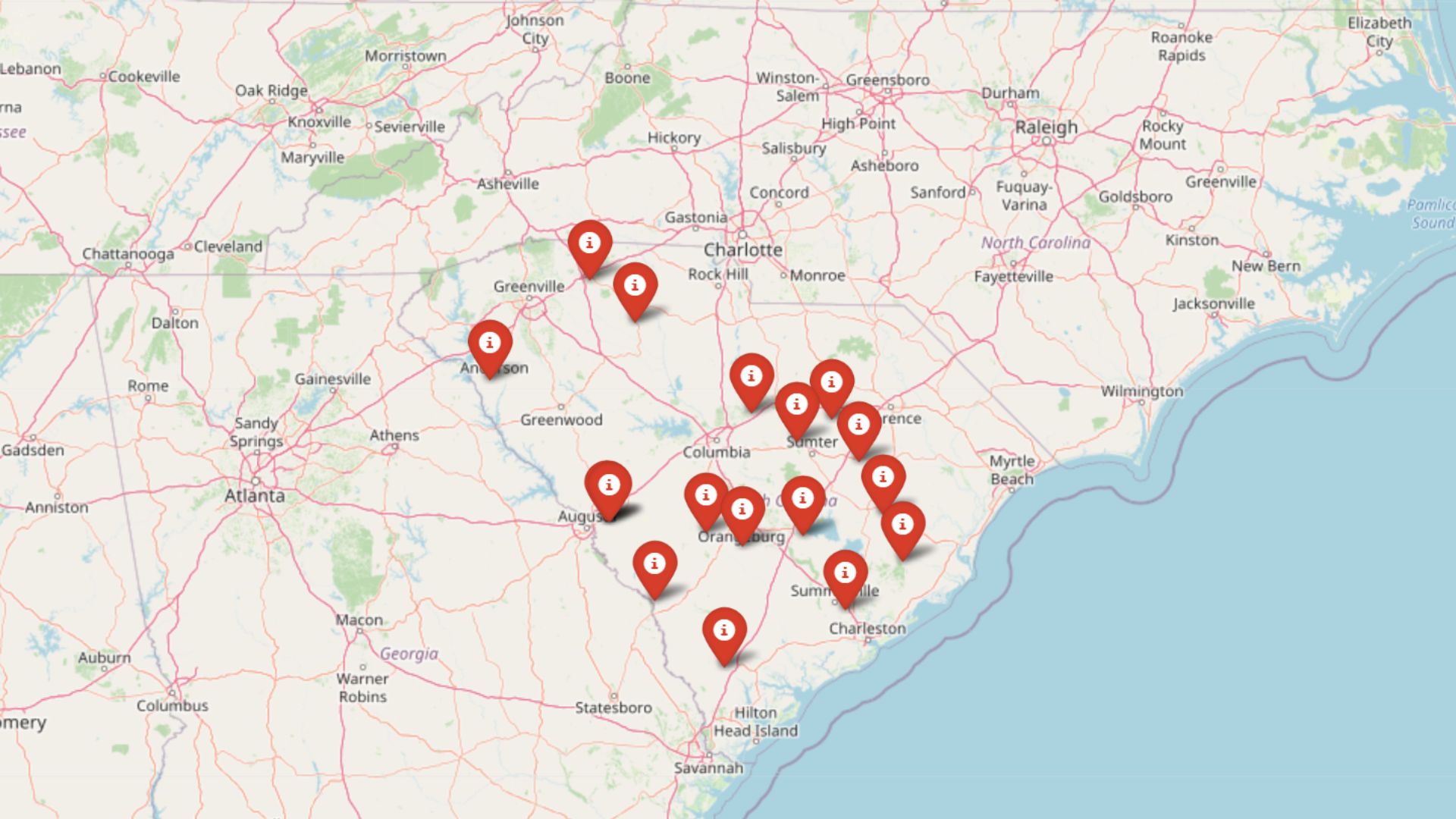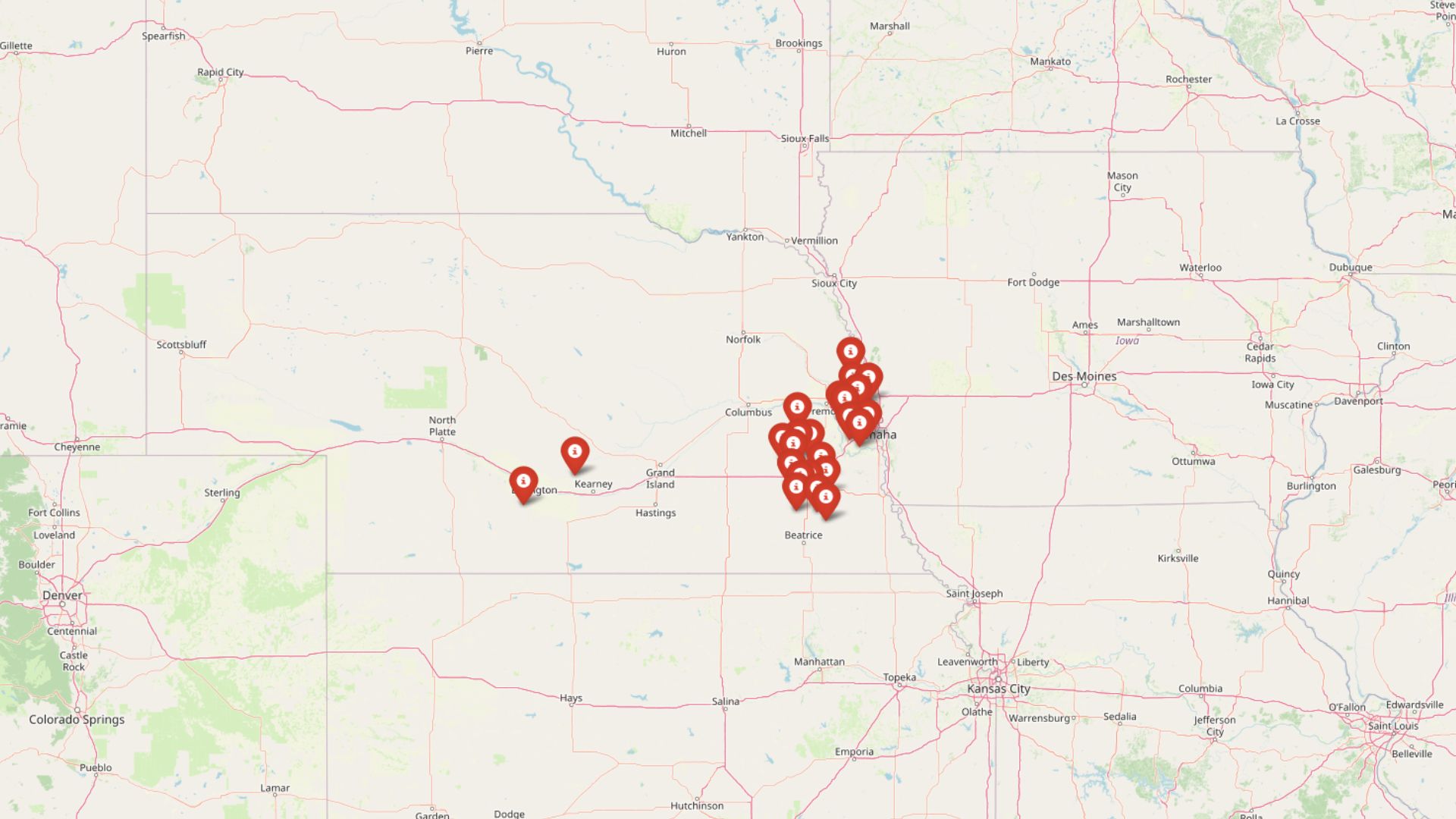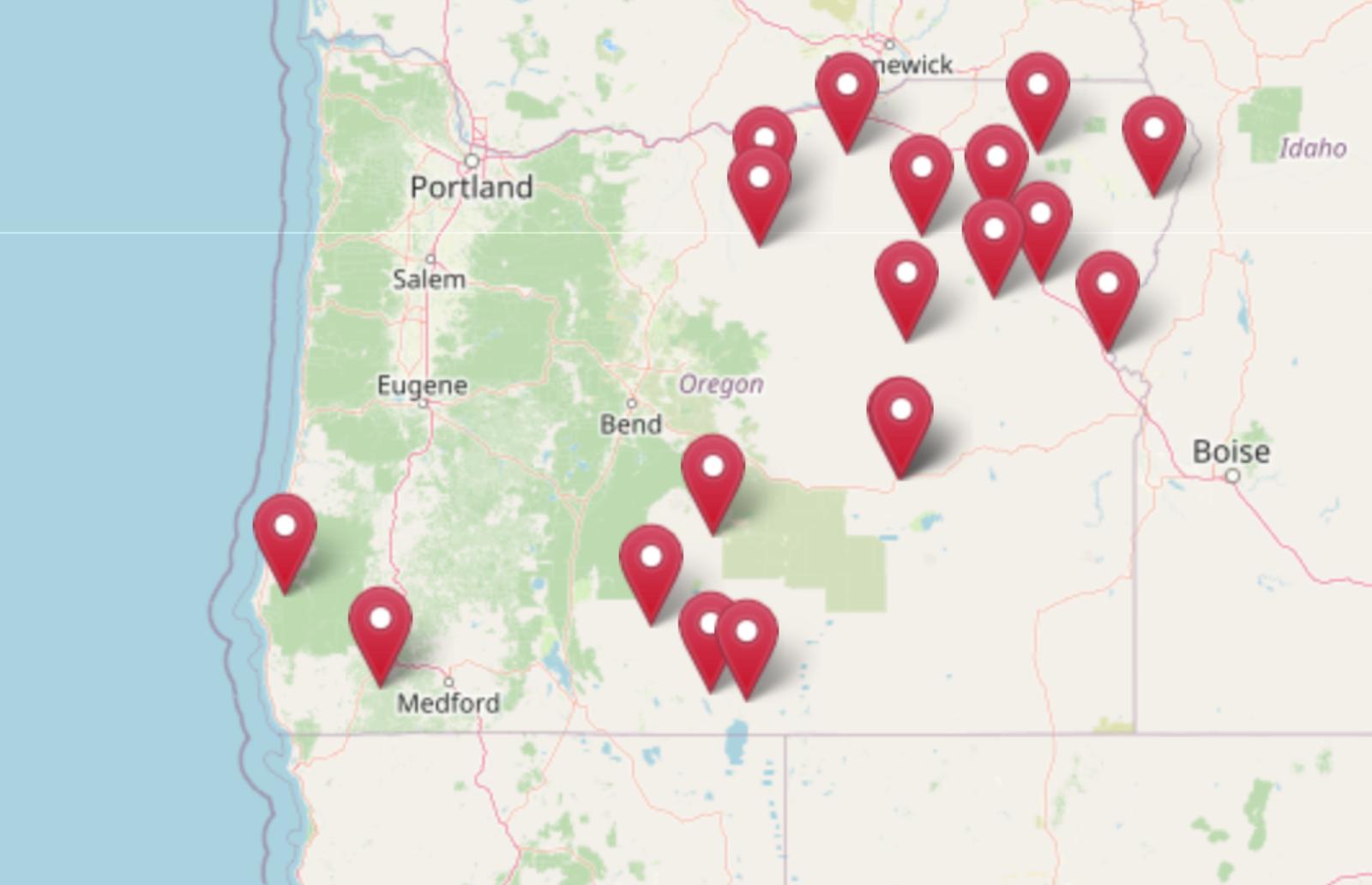
Even with Oregon’s housing market still running hot in many areas, there are towns where homeownership hasn’t drifted completely out of reach. Based on the latest data from the Zillow Home Value Index, these 19 towns stand out for keeping prices relatively affordable—without sacrificing quality of life. From high desert outposts to timber country and mountain towns, this list spotlights communities with solid infrastructure, economic resilience, and price tags that haven’t yet spiked past reason. Whether you’re a first-time buyer or downsizing for retirement, this is where Oregon still offers room to breathe—and buy.
19. Fossil – 95.6% Home Price Increase Since 2016

- 2010: N/A
- 2011: N/A
- 2012: N/A
- 2013: N/A
- 2014: N/A
- 2015: N/A
- 2016: $135,449
- 2017: $135,066 ($-383, -0.28% from previous year)
- 2018: $149,093 (+$14,027, +10.39% from previous year)
- 2019: $159,862 (+$10,769, +7.22% from previous year)
- 2020: $163,617 (+$3,755, +2.35% from previous year)
- 2021: $207,277 (+$43,660, +26.68% from previous year)
- 2022: $237,879 (+$30,602, +14.76% from previous year)
- 2023: $244,567 (+$6,688, +2.81% from previous year)
- 2024: $260,971 (+$16,404, +6.71% from previous year)
- 2025: $264,918 (+$3,947, +1.51% from previous year)
Home prices in Fossil have nearly doubled since 2016, rising from $135,449 to $264,918 by May 2025. That 95.6% increase came in waves — most notably a major jump in 2021 when values soared by over 26%. Since then, growth has slowed, but continued steadily. The current average home price in Fossil is still well under Oregon’s statewide median, making it a solid option for budget-conscious buyers.
Fossil – Isolated But Steadily Growing
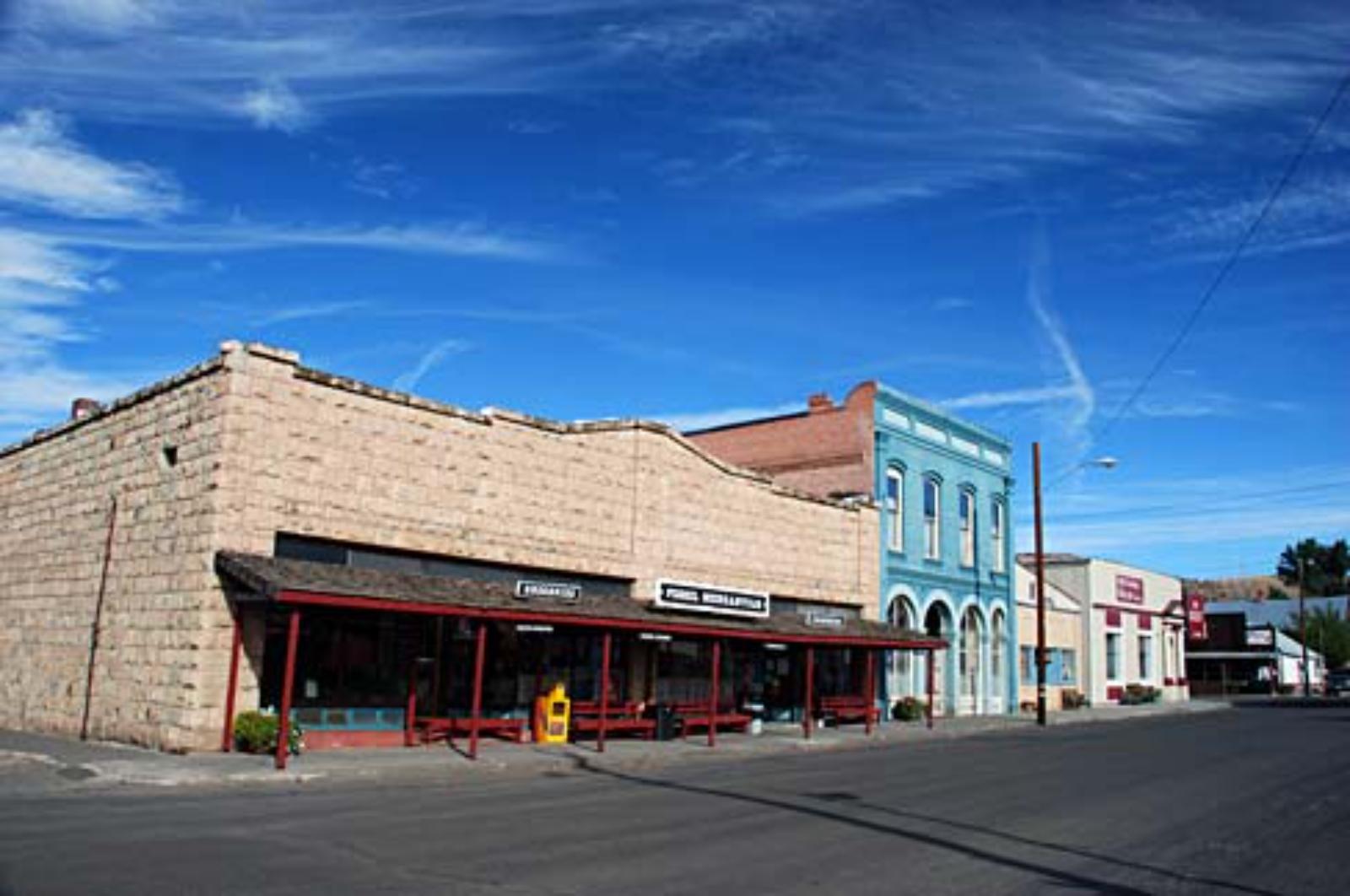
Fossil is a tiny town in Wheeler County, deep in eastern Oregon’s high desert. With a population of fewer than 500 residents, it’s best known for its fossil beds (hence the name) and remote, wide-open landscapes. There’s a public dig site behind the high school that attracts geology buffs, but the town sees few tourists otherwise. What Fossil lacks in convenience, it makes up for with privacy, land, and affordability. The steady growth in home prices since 2016 reflects gradual interest in rural living, particularly during the pandemic years when remote work opened up new possibilities for buyers. Though gains have slowed recently, prices remain higher than ever before — evidence of long-term shifts in demand for out-of-the-way spaces.
Fossil’s limited housing stock means even modest demand can push prices upward. Its location — far from major cities and job centers — keeps it one of Oregon’s most affordable places. Yet it remains functional, with basic amenities, a school, and a county courthouse. For those seeking a quiet, disconnected lifestyle and a piece of Oregon’s natural beauty, Fossil remains a viable choice. Its price trajectory is also reassuring for those who do invest here — appreciation has been relatively smooth compared to more volatile markets.
18. Baker City – 168.2% Home Price Increase Since 2012

- 2010: N/A
- 2011: N/A
- 2012: $97,610
- 2013: $97,533 ($-77, -0.08% from previous year)
- 2014: $104,094 (+$6,561, +6.73% from previous year)
- 2015: $110,568 (+$6,474, +6.22% from previous year)
- 2016: $115,275 (+$4,707, +4.26% from previous year)
- 2017: $122,973 (+$7,698, +6.68% from previous year)
- 2018: $130,264 (+$7,291, +5.93% from previous year)
- 2019: $143,351 (+$13,087, +10.05% from previous year)
- 2020: $156,263 (+$12,912, +9.01% from previous year)
- 2021: $192,933 (+$36,670, +23.47% from previous year)
- 2022: $238,982 (+$46,049, +23.87% from previous year)
- 2023: $243,127 (+$4,145, +1.73% from previous year)
- 2024: $257,742 (+$14,615, +6.01% from previous year)
- 2025: $261,857 (+$4,115, +1.60% from previous year)
Baker City’s home prices have risen from just under $98K in 2012 to nearly $262K by 2025. That 168% increase reflects long-term demand — with notable surges in 2021 and 2022 when prices jumped by over 23% two years in a row. While appreciation has cooled since then, the upward trend continues. This makes Baker City one of the most historically undervalued but fastest-appreciating affordable towns in Oregon.
Baker City – Historic Downtown and Outdoor Appeal

Located along I-84 in eastern Oregon, Baker City offers a mix of Old West charm and outdoor access. Its beautifully preserved downtown includes 19th-century brick buildings, coffee shops, restaurants, and a historic hotel. Surrounded by the Elkhorn Mountains and near Anthony Lakes ski area, it’s popular with retirees, remote workers, and adventure seekers alike. The city’s relative affordability and quality of life have boosted demand, especially since 2020. Long-term price growth here isn’t just a fluke — it reflects renewed interest in Oregon’s small towns that offer character and livability.
Despite recent flattening in price increases, Baker City remains one of the most desirable small towns for those looking east of the Cascades. It has full services — schools, a hospital, library, and multiple grocery options — making it more convenient than smaller towns on this list. Yet it still offers some of the lowest housing prices in the state. With appreciation steady over time and no major crash dips, it’s a market with both value and resilience.
17. Glendale – 164.1% Home Price Increase Since 2010

- 2010: $98,244
- 2011: $87,951 ($-10,293, -10.48% from previous year)
- 2012: $85,742 ($-2,209, -2.51% from previous year)
- 2013: $83,950 ($-1,792, -2.09% from previous year)
- 2014: $92,275 (+$8,325, +9.92% from previous year)
- 2015: $100,912 (+$8,637, +9.36% from previous year)
- 2016: $112,333 (+$11,421, +11.32% from previous year)
- 2017: $119,862 (+$7,529, +6.70% from previous year)
- 2018: $138,114 (+$18,252, +15.23% from previous year)
- 2019: $144,672 (+$6,558, +4.75% from previous year)
- 2020: $166,312 (+$21,640, +14.96% from previous year)
- 2021: $207,990 (+$41,678, +25.06% from previous year)
- 2022: $252,795 (+$44,805, +21.54% from previous year)
- 2023: $252,445 ($-350, -0.14% from previous year)
- 2024: $255,035 (+$2,590, +1.03% from previous year)
- 2025: $259,487 (+$4,452, +1.75% from previous year)
Glendale’s home values have more than doubled since 2010, rising 164% despite a sluggish start in the early 2010s. Prices dipped for several years before beginning a steep upward climb starting in 2014. By 2022, the average home was worth over $250K, and although growth has slowed recently, prices remain near record highs. This long-term appreciation highlights Glendale’s evolving status as a small, affordable town seeing increased buyer interest.
Glendale – A Rebound Story in Southern Oregon

Located in Douglas County along Interstate 5, Glendale is a quiet town nestled in a forested valley just north of Grants Pass. It was once a booming timber hub, and while that industry has declined, the community has persisted. The drop in home prices after 2010 was likely tied to lingering effects from the Great Recession, but things turned around as more buyers began exploring southern Oregon for its climate, natural beauty, and affordability. Glendale’s steep gains between 2020 and 2022 mirror trends seen in other small Oregon towns, as remote work opened new housing markets. Its modest size and rural character appeal to buyers seeking privacy and slower-paced living without entirely giving up access to bigger cities — Medford and Roseburg are both within driving distance.
The market here has cooled somewhat since its 2022 peak, with values stabilizing around $259K. Yet the broader trend still favors long-term appreciation, driven by constrained supply and increased interest in small-town Oregon. Schools, parks, and basic services are in place, and the surrounding area offers ample recreation opportunities — hiking, camping, and river access are all nearby. Glendale may not be growing fast in terms of population, but it’s clearly on more buyers’ radar. It’s a place where value is still accessible, and the trajectory of its price history suggests lasting strength in the years to come.
16. Elgin – 103.3% Home Price Increase Since 2010

- 2010: $126,491
- 2011: $118,376 ($-8,115, -6.42% from previous year)
- 2012: $116,717 ($-1,659, -1.40% from previous year)
- 2013: $114,512 ($-2,205, -1.89% from previous year)
- 2014: $120,802 (+$6,290, +5.49% from previous year)
- 2015: $122,455 (+$1,653, +1.37% from previous year)
- 2016: $133,182 (+$10,727, +8.76% from previous year)
- 2017: $143,001 (+$9,819, +7.37% from previous year)
- 2018: $151,834 (+$8,833, +6.18% from previous year)
- 2019: $158,441 (+$6,607, +4.35% from previous year)
- 2020: $168,479 (+$10,038, +6.34% from previous year)
- 2021: $193,671 (+$25,192, +14.95% from previous year)
- 2022: $232,836 (+$39,165, +20.22% from previous year)
- 2023: $227,186 ($-5,650, -2.43% from previous year)
- 2024: $235,040 (+$7,854, +3.46% from previous year)
- 2025: $257,177 (+$22,137, +9.42% from previous year)
Elgin has seen a 103% rise in home prices since 2010, doubling in value over 15 years. After a sluggish start with small declines between 2011 and 2013, growth picked up steadily. The biggest spike occurred between 2020 and 2022, followed by a small dip in 2023. Recent gains in 2024 and 2025 have put Elgin back on an upward track, with a current average home price above $257K.
Elgin – A Quiet Eastern Oregon Town With Momentum
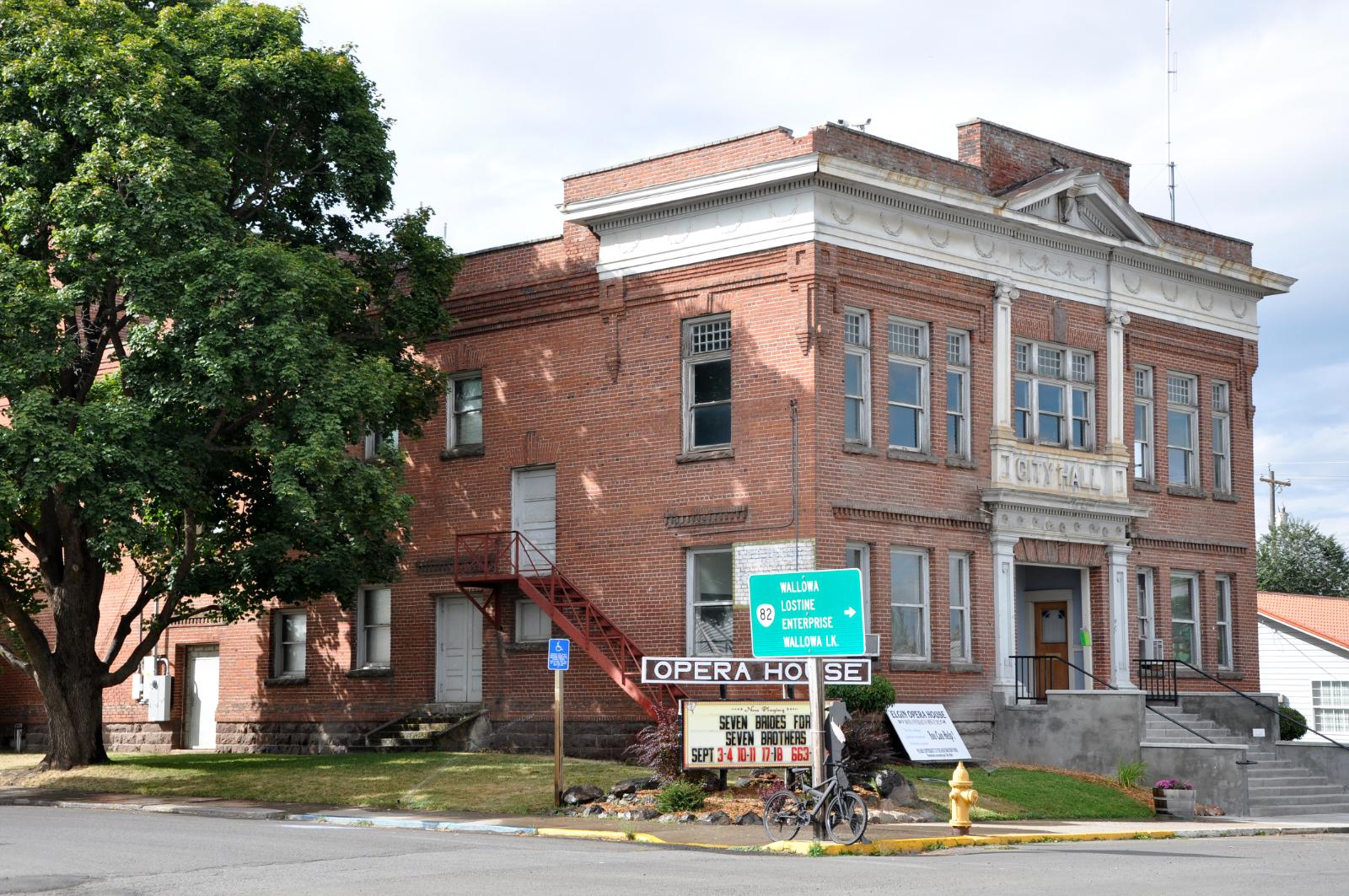
Elgin sits in Union County, about 20 miles north of La Grande in northeast Oregon. It’s surrounded by forest and farmland, offering classic small-town living in a scenic part of the state. While Elgin itself is small — fewer than 2,000 residents — it benefits from its proximity to the Wallowa Mountains and the Eagle Cap Wilderness, which draws seasonal visitors and second-home buyers. This geographic advantage has helped fuel recent interest in local real estate. The town is also home to the Elgin Opera House, a beautifully restored landmark that hosts community theater and events — a cultural anchor in an otherwise rural setting. The availability of affordable housing has long been a draw here, but rising values show that demand is catching up with supply.
With a 2025 average price just under $260K, Elgin remains affordable by statewide standards, especially for those willing to live farther from Oregon’s urban centers. Internet connectivity and flexible work arrangements have made towns like Elgin newly viable for a wider range of buyers. Unlike other towns that saw dramatic one-year jumps, Elgin’s growth has mostly been steady, signaling a durable market. The housing stock includes a mix of older homes and newer builds, and the surrounding area offers ample space for development. As buyers continue to seek out scenic and affordable alternatives to overbuilt markets, Elgin’s blend of charm, location, and price keeps it on the rise.
15. Beatty – 10.2% Home Price Increase Since 2022

- 2010: N/A
- 2011: N/A
- 2012: N/A
- 2013: N/A
- 2014: N/A
- 2015: N/A
- 2016: N/A
- 2017: N/A
- 2018: N/A
- 2019: N/A
- 2020: N/A
- 2021: N/A
- 2022: $229,589
- 2023: $234,748 (+$5,159, +2.25% from previous year)
- 2024: $245,490 (+$10,742, +4.58% from previous year)
- 2025: $253,137 (+$7,647, +3.11% from previous year)
Beatty has only been tracked in the Zillow Home Value Index since 2022, but in that short time, it’s gained over 10% in value. Prices have climbed each year, reaching an average of $253,137 in 2025. The steady pace of growth signals increasing demand, even without dramatic spikes, and shows that this quiet rural town is drawing interest.
Beatty – Emerging Affordability in Southern Oregon
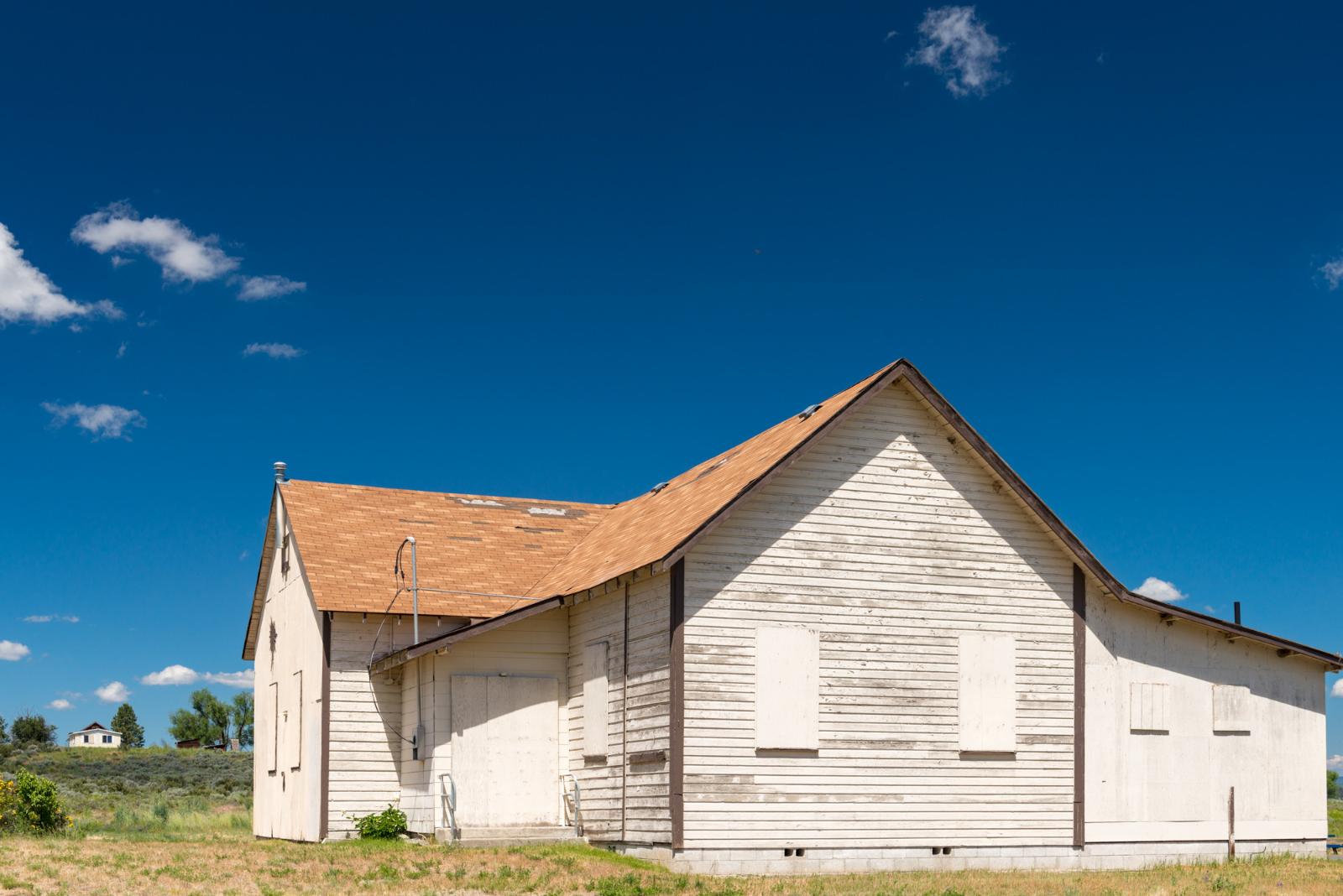
Beatty is a tiny community in Klamath County, located along Highway 140 between Bly and Sprague River. With limited development and a population of under 100, Beatty is more of a rural settlement than a full-fledged town — but that’s part of its appeal. Surrounded by pine forests, pastureland, and close to the Fremont-Winema National Forest, the area attracts those seeking total privacy and open space. Because of its size, home sales are infrequent, which means values can rise quickly with just a few well-priced transactions. The slow but consistent gains since 2022 reflect a growing awareness of the area’s potential among rural buyers, particularly those priced out of larger towns in southern Oregon.
What makes Beatty interesting is its potential rather than its infrastructure. It has few services of its own, but offers access to recreation and land, making it appealing to homesteaders, off-grid enthusiasts, or retirees looking for a quiet final landing place. As with many ultra-rural Oregon communities, demand here is driven less by jobs or amenities and more by lifestyle preferences. The rising home values — without volatility — suggest that Beatty is starting to show up on the radar of niche buyers. While it may never experience the growth of more developed towns, it offers a low-entry point into ownership and has posted solid, reliable appreciation over three years.
14. Sumpter – 25.9% Home Price Increase Since 2021

- 2010: N/A
- 2011: N/A
- 2012: N/A
- 2013: N/A
- 2014: N/A
- 2015: N/A
- 2016: N/A
- 2017: N/A
- 2018: N/A
- 2019: N/A
- 2020: N/A
- 2021: $200,088
- 2022: $237,702 (+$37,614, +18.80% from previous year)
- 2023: $248,481 (+$10,779, +4.53% from previous year)
- 2024: $246,076 ($-2,405, -0.97% from previous year)
- 2025: $251,868 (+$5,792, +2.35% from previous year)
Sumpter has seen home values climb by nearly 26% since 2021, hitting $251,868 by 2025. After a strong jump in 2022, growth slowed but remained positive overall. The recent dip in 2024 was minor, and prices bounced back the next year. While data is limited to the past four years, it’s clear that interest in Sumpter has increased — and values have risen accordingly.
Sumpter – Historic Charm in Oregon’s Gold Country
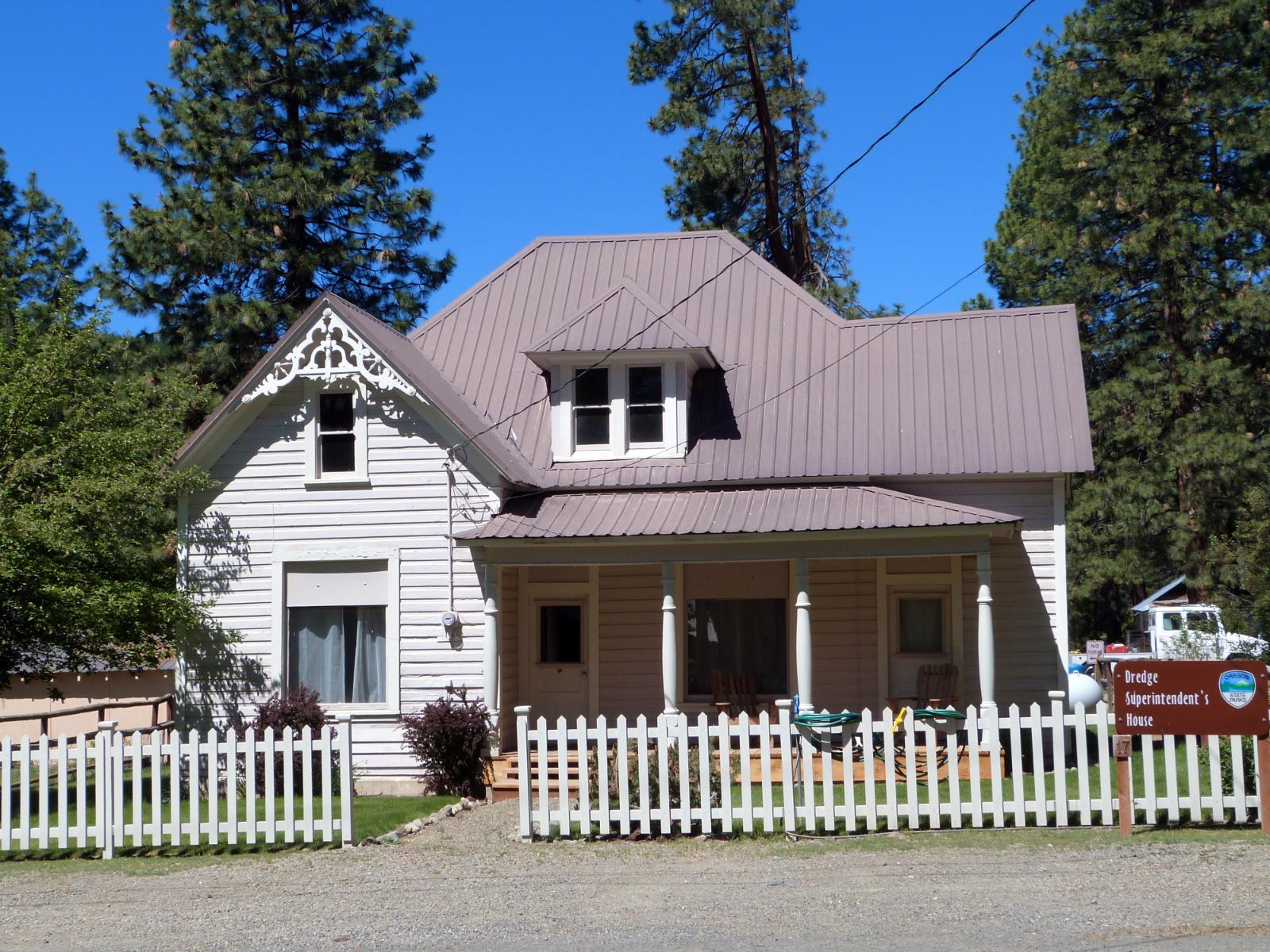
Nestled in the Blue Mountains of Baker County, Sumpter is a tiny, historic mining town with a population under 300. It was once a hub during Oregon’s gold rush and still celebrates its heritage with a working narrow-gauge railroad and remnants of old gold dredges. Today, Sumpter appeals to history buffs, RV travelers, and outdoor adventurers who appreciate its mountain scenery and quiet setting. Despite its size, it attracts second-home buyers and seasonal visitors, which can create enough market activity to drive up home prices. The strong price bump in 2022 likely reflects renewed tourism interest and investment in rural recreation areas during the post-COVID housing boom. With limited housing stock, even modest demand can push average prices higher.
Sumpter remains highly affordable by Oregon standards, but it’s no longer an overlooked market. Its proximity to hiking, off-roading, and snowmobiling trails makes it a niche destination for buyers seeking a getaway spot in the mountains. Most homes are rustic cabins or historic properties, and new construction is rare. Still, for those looking for solitude and a slice of Oregon history, Sumpter delivers. The recent steadiness in price appreciation suggests that interest has stabilized, but values are holding firm. For real estate watchers, it’s a small but telling example of how even the state’s most remote historic towns are experiencing long-term shifts in value.
13. North Powder – 90.9% Home Price Increase Since 2017

- 2010: N/A
- 2011: N/A
- 2012: N/A
- 2013: N/A
- 2014: N/A
- 2015: N/A
- 2016: N/A
- 2017: $129,179
- 2018: $133,013 (+$3,834, +2.97% from previous year)
- 2019: $141,661 (+$8,648, +6.50% from previous year)
- 2020: $152,973 (+$11,312, +7.99% from previous year)
- 2021: $179,732 (+$26,759, +17.49% from previous year)
- 2022: $212,326 (+$32,594, +18.13% from previous year)
- 2023: $220,090 (+$7,764, +3.66% from previous year)
- 2024: $236,615 (+$16,525, +7.51% from previous year)
- 2025: $246,660 (+$10,045, +4.25% from previous year)
North Powder has experienced a steady and substantial price increase of over 90% since 2017, with home values rising from $129K to nearly $247K. While the sharpest growth happened between 2020 and 2022, the trend remains positive, with strong gains continuing into 2025. This kind of appreciation reflects rising demand in small, under-the-radar towns with open land and outdoor appeal.
North Powder – A Tiny Hub Along Eastern Oregon’s Scenic Byways

Located in Union County between Baker City and La Grande, North Powder is a quiet community of around 500 people. Its setting along Highway 237 places it near the base of the Elkhorn Mountains, a short drive from Anthony Lakes and the Wallowa-Whitman National Forest. This makes it attractive to buyers seeking a foothold in Oregon’s northeast corner, where mountain views, rivers, and open spaces are in abundance. North Powder’s small size keeps housing options limited, which contributes to its steady rise in average prices. Many buyers here are either locals or regional movers looking for space, affordability, and peace — not speculative investors. Still, values have risen quickly due to the appeal of the area’s recreational access and rural lifestyle.
The housing stock in North Powder is mostly single-family homes, many on large lots. Infrastructure is minimal — there’s a school, gas station, and a handful of small businesses — but nearby cities provide additional resources. What sets the town apart is its position as a gateway to outdoor destinations while still offering entry-level home prices. The steady climb in prices since 2017 suggests durability and demand, even in a market with limited turnover. As more buyers expand their searches to Oregon’s eastern reaches, North Powder stands out for its mix of affordability and proximity to some of the state’s most scenic terrain. It’s a place where buyers get more space, cleaner air, and long-term value growth all in one package.
12. Heppner – 121.7% Home Price Increase Since 2010

- 2010: $110,005
- 2011: $105,373 ($-4,632, -4.21% from previous year)
- 2012: $108,146 (+$2,773, +2.63% from previous year)
- 2013: $109,506 (+$1,360, +1.26% from previous year)
- 2014: $110,931 (+$1,425, +1.30% from previous year)
- 2015: $115,021 (+$4,090, +3.69% from previous year)
- 2016: $122,841 (+$7,820, +6.80% from previous year)
- 2017: $132,237 (+$9,396, +7.65% from previous year)
- 2018: $141,629 (+$9,392, +7.10% from previous year)
- 2019: $149,387 (+$7,758, +5.48% from previous year)
- 2020: $163,568 (+$14,181, +9.49% from previous year)
- 2021: $199,745 (+$36,177, +22.12% from previous year)
- 2022: $223,461 (+$23,716, +11.87% from previous year)
- 2023: $226,571 (+$3,110, +1.39% from previous year)
- 2024: $235,289 (+$8,718, +3.85% from previous year)
- 2025: $243,874 (+$8,585, +3.65% from previous year)
Heppner’s home values have more than doubled since 2010, growing by nearly 122% across 15 years. Most of that growth came after 2016, including a major leap in 2021 when values rose by over 22%. Growth has slowed since, but prices continue to rise steadily — up to $243,874 in 2025. Heppner now sits in the middle of Oregon’s affordability spectrum, with continued value momentum.
Heppner – A Small-Town Seat with a Stable Market
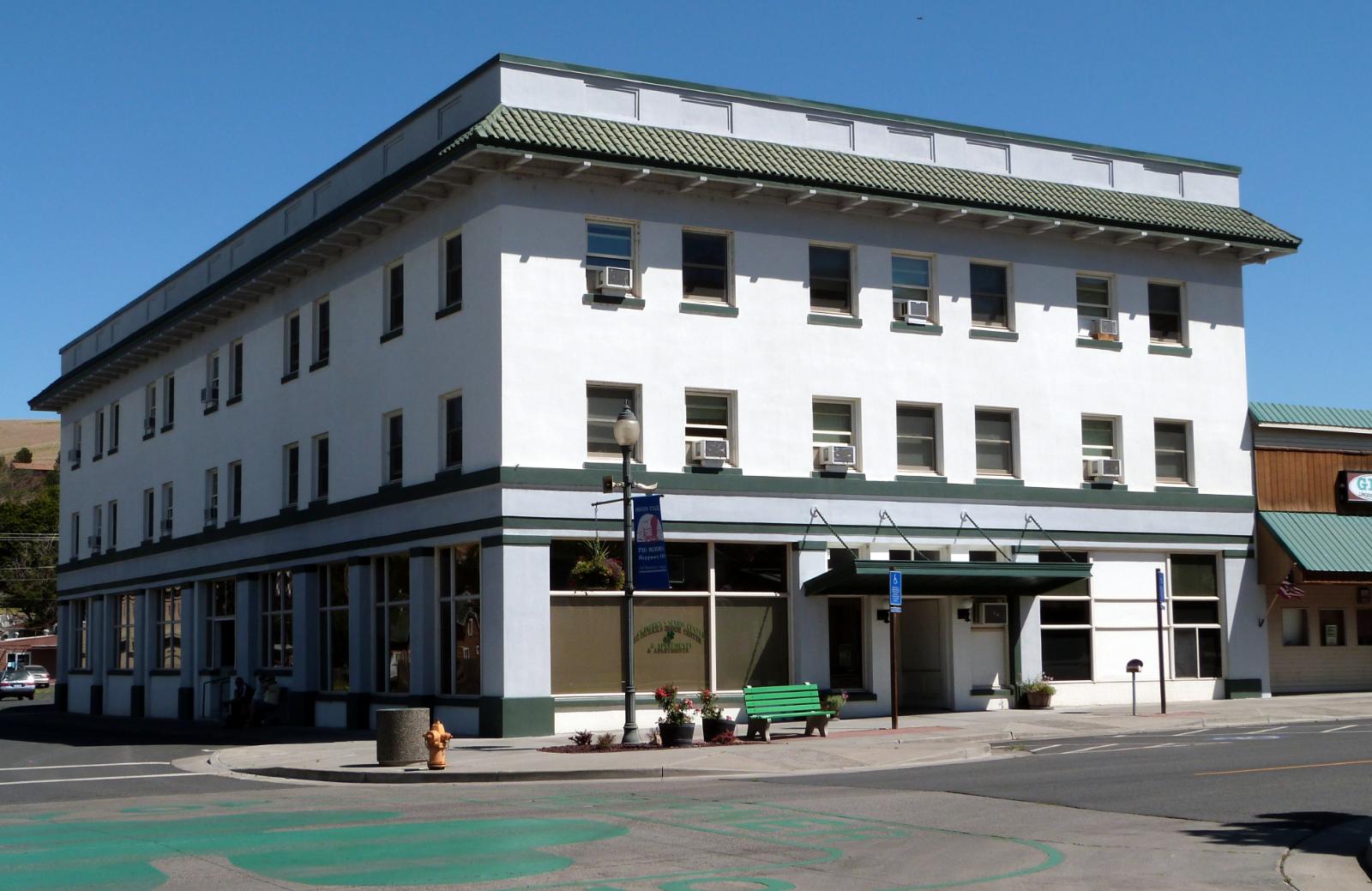
Heppner is the county seat of Morrow County and has long served as a central hub for the surrounding rural region. With just under 1,300 residents, it maintains a full range of basic services, including a hospital, schools, and government offices. It’s located in the hills of north-central Oregon, far from the state’s more urbanized corridors, but with a distinct identity of its own. What makes Heppner stand out is its consistency. Home prices have climbed in a measured and stable way, never spiking too high but never dipping dramatically either. The jump in 2021 aligns with broader rural buying trends, and the continued appreciation since then reinforces the town’s value as a long-term investment. Buyers are drawn to its livability, low cost of entry, and quiet pace.
Heppner’s economy is rooted in agriculture and county services, which has kept the market insulated from more extreme booms and busts. The housing stock includes both historic homes and more recent builds, with plenty of land still available in and around the town. For buyers looking to settle down without chasing fast flips, Heppner offers a refreshing alternative. Its location is far from major job centers, but its self-sufficiency appeals to those seeking independence and low stress. With average prices still below $250K in 2025 and a solid decade of appreciation behind it, Heppner presents itself as one of the most reliable affordable towns in the state.
11. Prairie City – 1.4% Home Price Increase Since 2022

- 2010: N/A
- 2011: N/A
- 2012: N/A
- 2013: N/A
- 2014: N/A
- 2015: N/A
- 2016: N/A
- 2017: N/A
- 2018: N/A
- 2019: N/A
- 2020: N/A
- 2021: N/A
- 2022: $237,539
- 2023: $241,194 (+$3,655, +1.54% from previous year)
- 2024: $242,318 (+$1,124, +0.47% from previous year)
- 2025: $240,820 ($-1,498, -0.62% from previous year)
Prairie City’s home values have hovered just above the $240K mark since 2022, showing little movement over three years. The total change — a 1.4% increase — reflects a market that’s stable but not surging. Prices peaked in 2024 before dipping slightly in 2025, but the overall trend suggests steadiness rather than volatility. It’s a market that’s holding its ground rather than climbing aggressively.
Prairie City – Holding Steady at the Edge of the Mountains
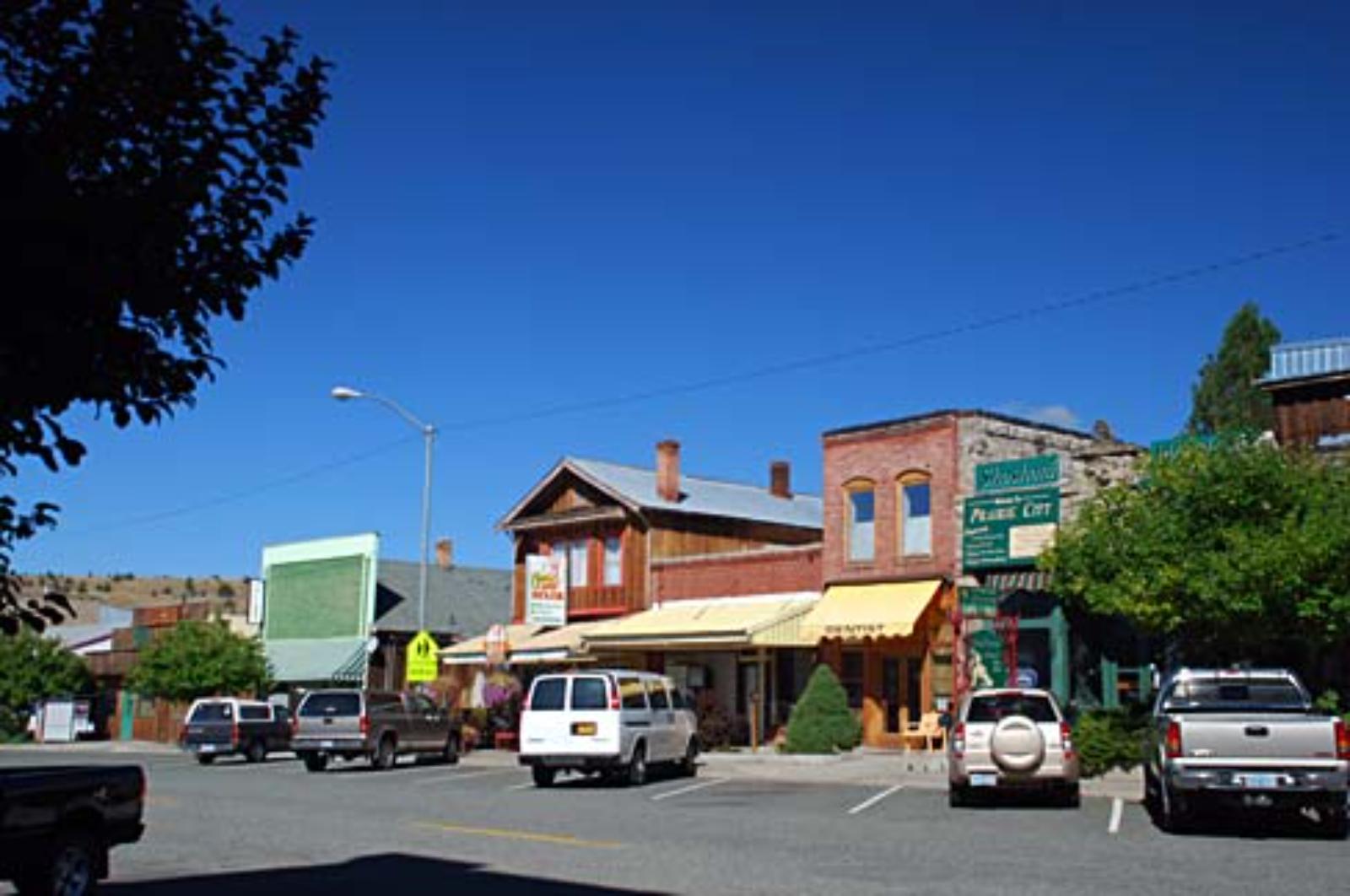
Located at the base of the Strawberry Mountains in Grant County, Prairie City is a scenic town of about 900 people that blends mountain beauty with small-town charm. It serves as a gateway to hiking, camping, and winter recreation in the nearby wilderness areas, making it popular with outdoors-oriented buyers. Although its real estate market is small, the town draws retirees and lifestyle buyers looking for peace and privacy. The flat price trends from 2022–2025 reflect a market where supply is tight and demand is consistent — enough to keep prices high, but not enough to create dramatic growth. The housing stock includes historic homes, ranch properties, and cabins, with few new developments entering the market.
Prairie City’s economy revolves around local businesses, public services, and seasonal tourism. The town has schools, a museum, a public library, and several shops and cafes, providing a strong sense of self-sufficiency despite its remote location. It’s also one of the most visually appealing towns on this list, with mountain views in every direction and a charming downtown strip. For buyers who value stability over speculation, Prairie City offers a market with staying power. Its home prices have shown minimal movement, which can be a positive indicator for long-term buyers who prefer predictability over risk. With a current average under $241K, it’s still affordable for many and offers a lifestyle few other towns can match.
10. Pilot Rock – 124.4% Home Price Increase Since 2010

- 2010: $107,137
- 2011: $99,195 ($-7,942, -7.41% from previous year)
- 2012: $98,104 ($-1,091, -1.10% from previous year)
- 2013: $104,427 (+$6,323, +6.45% from previous year)
- 2014: $110,317 (+$5,890, +5.64% from previous year)
- 2015: $116,095 (+$5,778, +5.24% from previous year)
- 2016: $120,622 (+$4,527, +3.90% from previous year)
- 2017: $123,720 (+$3,098, +2.57% from previous year)
- 2018: $133,795 (+$10,075, +8.14% from previous year)
- 2019: $143,815 (+$10,020, +7.49% from previous year)
- 2020: $156,656 (+$12,841, +8.93% from previous year)
- 2021: $187,625 (+$30,969, +19.77% from previous year)
- 2022: $227,823 (+$40,198, +21.42% from previous year)
- 2023: $227,920 (+$97, +0.04% from previous year)
- 2024: $232,327 (+$4,407, +1.93% from previous year)
- 2025: $240,437 (+$8,110, +3.49% from previous year)
Pilot Rock has more than doubled in value since 2010, with a 124.4% gain. The most aggressive growth occurred in 2021 and 2022, when prices jumped nearly 42% combined. Since then, appreciation has slowed but continued steadily. The current average sits just above $240K — still firmly in affordable territory by Oregon standards, but far above where it was just a decade ago.
Pilot Rock – Affordable Living Near Pendleton
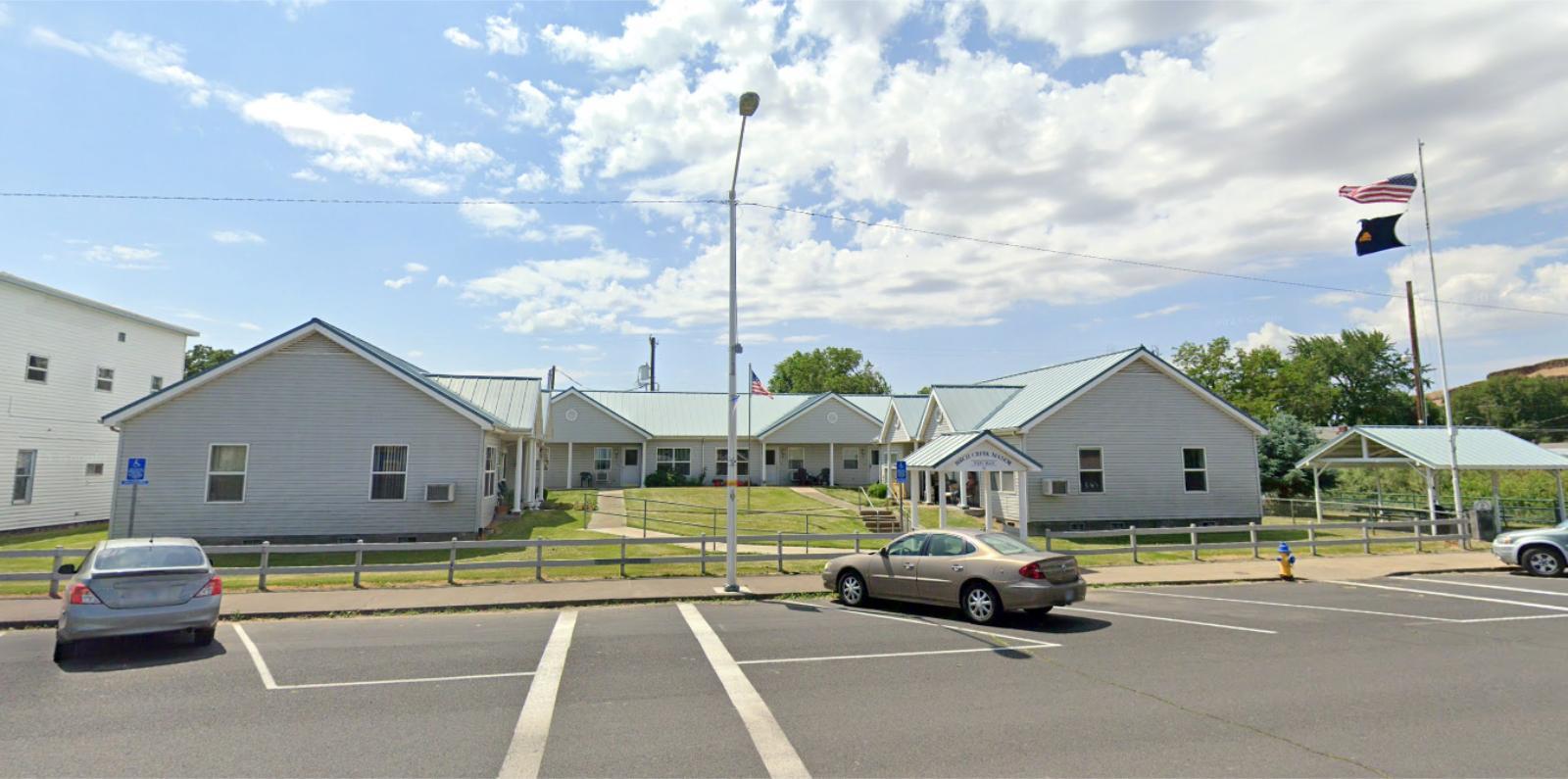
Pilot Rock is a small town in Umatilla County, roughly 15 minutes south of Pendleton. With just over 1,500 residents, it offers a quiet setting close to job opportunities and services in the region’s larger cities. Historically a logging town, it now attracts a mix of locals, retirees, and regional buyers looking for small-town living without the remoteness of deeper rural areas. Its proximity to Pendleton, home to the famous Round-Up rodeo and regional medical facilities, adds to its appeal. The housing market here consists mostly of single-family homes, with prices still well below state averages. The surge in values during the early 2020s reflected growing demand for communities that offer both space and convenience, especially as affordability in nearby areas declined.
What makes Pilot Rock attractive to buyers today is its combination of accessibility and calm. Residents can enjoy slower-paced life, views of the Blue Mountains, and strong community ties — all within commuting distance to major employers. The post-2022 price trends indicate a return to slower but stable appreciation, which may appeal to cautious buyers hoping to avoid volatile markets. Unlike more isolated rural towns, Pilot Rock is anchored by its regional connections, giving it more resilience against market swings. As of 2025, home values continue to rise modestly, signaling sustained interest in this small but well-situated town.
9. Merrill – 137.7% Home Price Increase Since 2010

- 2010: $99,937
- 2011: $91,487 ($-8,450, -8.46% from previous year)
- 2012: $87,873 ($-3,614, -3.95% from previous year)
- 2013: $81,957 ($-5,916, -6.73% from previous year)
- 2014: $93,706 (+$11,749, +14.34% from previous year)
- 2015: $100,914 (+$7,208, +7.69% from previous year)
- 2016: $118,926 (+$18,012, +17.85% from previous year)
- 2017: $118,458 ($-468, -0.39% from previous year)
- 2018: $134,230 (+$15,772, +13.31% from previous year)
- 2019: $150,460 (+$16,230, +12.09% from previous year)
- 2020: $159,292 (+$8,832, +5.87% from previous year)
- 2021: $193,476 (+$34,184, +21.46% from previous year)
- 2022: $224,364 (+$30,888, +15.96% from previous year)
- 2023: $227,806 (+$3,442, +1.53% from previous year)
- 2024: $233,282 (+$5,476, +2.40% from previous year)
- 2025: $237,463 (+$4,181, +1.79% from previous year)
Merrill’s average home value has jumped from just under $100K in 2010 to over $237K by 2025 — a total increase of nearly 138%. The biggest jumps occurred between 2014 and 2022, with double-digit gains in several years. Recent appreciation has been slower, but the overall upward trend remains intact, keeping Merrill in the affordable-but-growing category.
Merrill – Farmland Stability in Southern Oregon
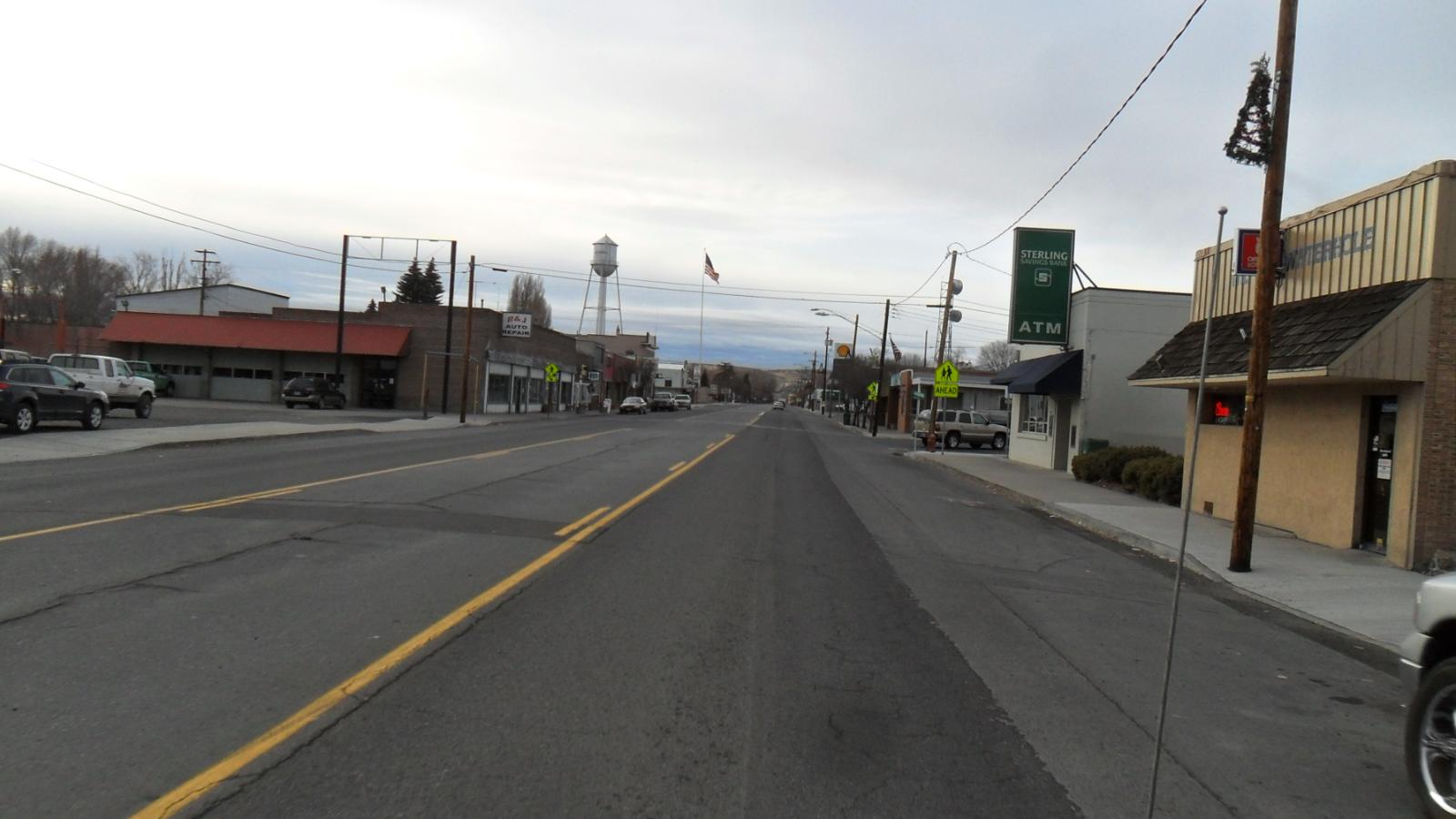
Located in Klamath County just north of the California border, Merrill is a small agricultural community with a strong farming heritage. The town is surrounded by fertile fields and irrigation canals and is known for its onions, hay, and potatoes. With a population around 800, it remains quiet and close-knit. Yet, home prices have surged over the last decade — partly because of regional growth and partly due to limited housing inventory. The market has been especially strong since 2020, when buyers began seeking out rural areas with productive land, open space, and no urban congestion. Merrill fits that bill perfectly, and it has managed to grow without losing its identity.
Though small, Merrill is not isolated. It’s about 20 minutes from Klamath Falls, which offers shopping, hospitals, and employment. This regional proximity allows residents to enjoy low costs while remaining connected to services. Merrill’s housing stock is modest and mostly single-family homes, many of them on large lots. The stable price increases in recent years suggest sustained interest from both local and out-of-area buyers. With prices still below $240K in 2025, Merrill remains one of the most affordable options for buyers seeking a rural, agriculturally rich setting with long-term price appreciation already baked in.
8. Hines – 135.7% Home Price Increase Since 2011

- 2010: N/A
- 2011: $97,398
- 2012: $98,073 (+$675, +0.69% from previous year)
- 2013: $99,704 (+$1,631, +1.66% from previous year)
- 2014: $107,544 (+$7,840, +7.86% from previous year)
- 2015: $106,342 ($-1,202, -1.12% from previous year)
- 2016: $105,845 ($-497, -0.47% from previous year)
- 2017: $118,681 (+$12,836, +12.13% from previous year)
- 2018: $126,651 (+$7,970, +6.72% from previous year)
- 2019: $131,995 (+$5,344, +4.22% from previous year)
- 2020: $144,576 (+$12,581, +9.53% from previous year)
- 2021: $180,047 (+$35,471, +24.53% from previous year)
- 2022: $220,013 (+$39,966, +22.20% from previous year)
- 2023: $224,538 (+$4,525, +2.06% from previous year)
- 2024: $227,122 (+$2,584, +1.15% from previous year)
- 2025: $229,615 (+$2,493, +1.10% from previous year)
Hines has seen its average home value more than double since 2011, climbing from under $100K to nearly $230K in 2025. Much of this growth came between 2020 and 2022, when the town experienced two consecutive years of 20%+ appreciation. While recent gains have been more modest, Hines continues to trend upward in a stable, consistent fashion.
Hines – Quiet Growth in Oregon’s High Desert
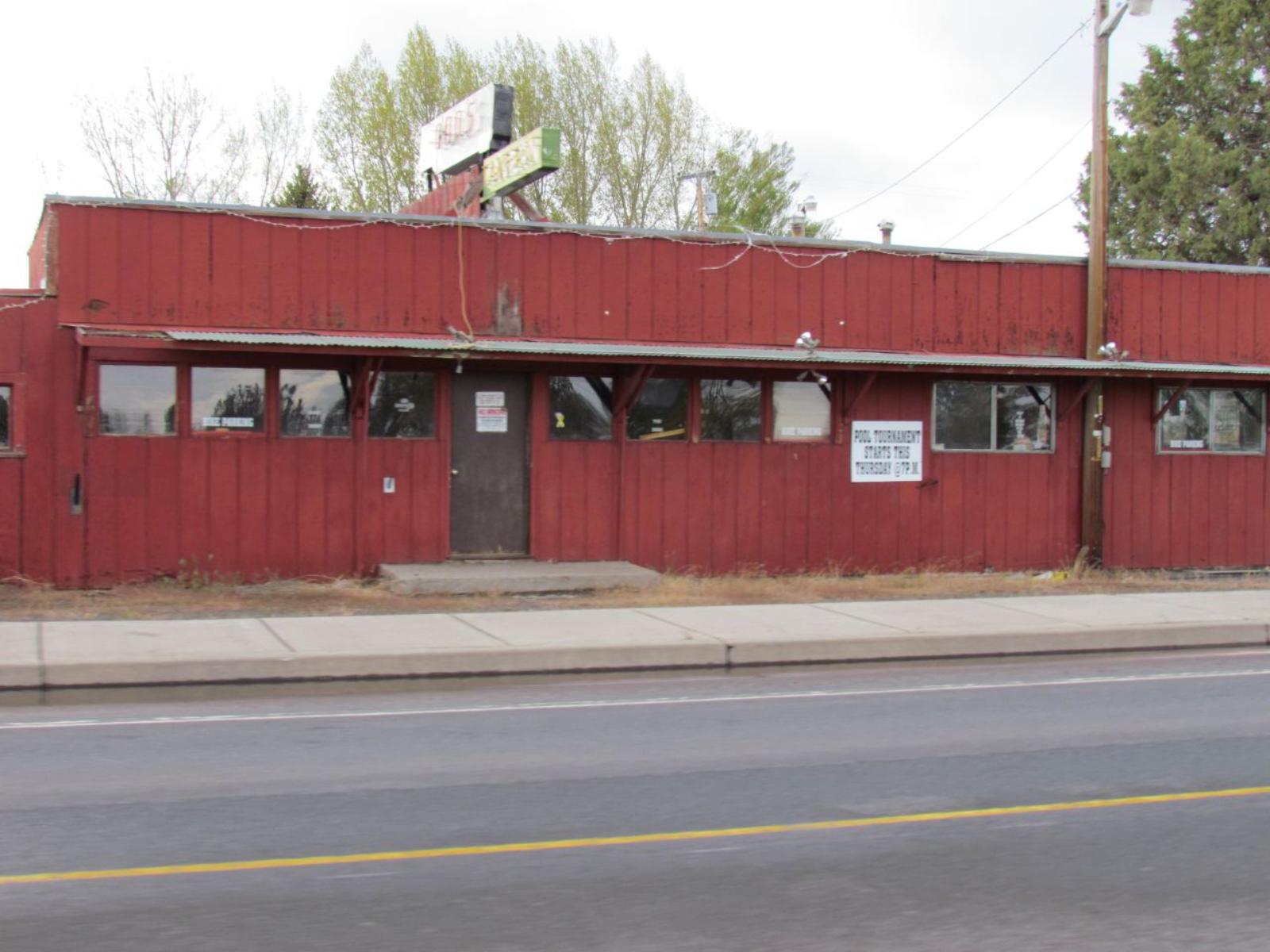
Hines is located right next to Burns in Harney County, forming a small two-town region in southeastern Oregon’s high desert. With a population of about 1,500, it serves as a quieter, more residential counterpart to Burns’ county seat functions. The town’s modest size hasn’t kept it from seeing big price increases in the last few years. Hines gained appeal during the pandemic as remote workers and retirees looked for affordable housing with open skies and fewer crowds. Its strong appreciation from 2020 to 2022 reflected this rural migration trend. Though price growth has cooled to single digits in recent years, Hines has held its value well — a sign of lasting demand.
The housing stock here includes many single-story homes with yards, and properties tend to be larger and less expensive than those in Oregon’s more populous areas. Residents enjoy proximity to Malheur National Wildlife Refuge, Steens Mountain, and other outdoor attractions that define Oregon’s high desert. While the job base is limited, the low cost of living and quality of life attract people who value space and simplicity. Recent appreciation suggests that Hines is no longer flying under the radar. And yet, with home prices still well under the state median, it remains one of the best combinations of affordability and stability on this list.
7. Lakeview – 95.5% Home Price Increase Since 2016

- 2010: N/A
- 2011: N/A
- 2012: N/A
- 2013: N/A
- 2014: N/A
- 2015: N/A
- 2016: $104,134
- 2017: $107,930 (+$3,796, +3.65% from previous year)
- 2018: $109,511 (+$1,581, +1.46% from previous year)
- 2019: $117,870 (+$8,359, +7.63% from previous year)
- 2020: $127,391 (+$9,521, +8.08% from previous year)
- 2021: $163,354 (+$35,963, +28.23% from previous year)
- 2022: $187,315 (+$23,961, +14.67% from previous year)
- 2023: $195,665 (+$8,350, +4.46% from previous year)
- 2024: $195,987 (+$322, +0.16% from previous year)
- 2025: $203,601 (+$7,614, +3.88% from previous year)
Lakeview’s home prices have climbed 95.5% since 2016, nearly doubling over nine years. The most dramatic increase came in 2021, when values surged by over 28%. Since then, appreciation has continued at a gentler pace, with prices crossing the $200K threshold in 2025. That combination of growth and affordability places Lakeview solidly in Oregon’s emerging markets category.
Lakeview – Recreation, Space, and a Rising Market
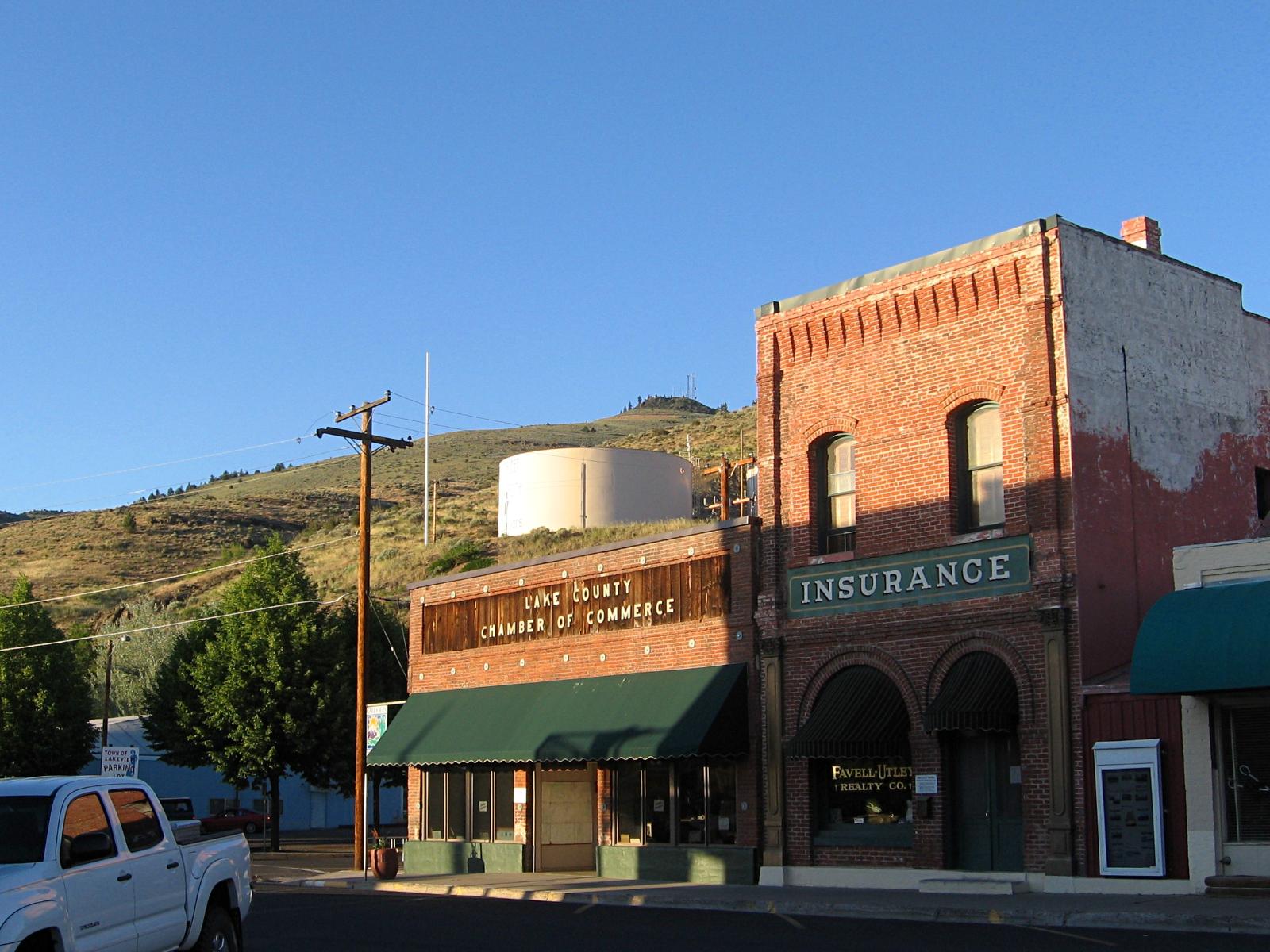
Lakeview is the county seat of Lake County and sits near the California border in Oregon’s far south. It markets itself as the “Tallest Town in Oregon” thanks to its elevation and stunning natural surroundings. With roughly 2,300 residents, it’s a well-equipped rural town with schools, healthcare, and local businesses. Lakeview appeals to people who want access to high-desert recreation — from hiking and hunting to hot springs and winter sports. Its steady rise in home values reflects an increasing recognition of the town’s potential, especially among buyers priced out of central Oregon or those looking for affordable land in scenic areas. The price jump in 2021 likely reflected the same rural migration wave that lifted many remote towns across the country.
Despite modest cooling in 2024, Lakeview’s 2025 numbers suggest a renewed upward trend. Homes here often come with large lots and sweeping views, and the town’s grid-style layout and established infrastructure make it easy to navigate and live in. Buyers are drawn to the balance of livability and remoteness — it’s quiet but not cut off. As outdoor recreation continues to grow in popularity and affordability remains scarce in much of the state, towns like Lakeview are poised to stay relevant. Its current home prices, still well below Oregon’s median, make it an appealing destination for long-term buyers seeking both value and room to grow.
6. Bly – 126.8% Home Price Increase Since 2010

- 2010: $85,413
- 2011: $84,148 ($-1,265, -1.48% from previous year)
- 2012: $82,583 ($-1,565, -1.86% from previous year)
- 2013: $81,782 ($-801, -0.97% from previous year)
- 2014: $87,336 (+$5,554, +6.79% from previous year)
- 2015: $87,951 (+$615, +0.70% from previous year)
- 2016: $101,691 (+$13,740, +15.62% from previous year)
- 2017: $112,227 (+$10,536, +10.36% from previous year)
- 2018: $126,174 (+$13,947, +12.43% from previous year)
- 2019: $136,430 (+$10,256, +8.13% from previous year)
- 2020: $139,410 (+$2,980, +2.18% from previous year)
- 2021: $179,569 (+$40,159, +28.81% from previous year)
- 2022: $206,991 (+$27,422, +15.27% from previous year)
- 2023: $205,933 ($-1,058, -0.51% from previous year)
- 2024: $206,238 (+$305, +0.15% from previous year)
- 2025: $193,668 ($-12,570, -6.09% from previous year)
Bly saw explosive home price growth between 2016 and 2022, gaining over 126% since 2010. Prices peaked in 2022 at $206,991 and have declined slightly since, settling at $193,668 in 2025. While recent years have shown some cooling, the long-term trend remains well above where the market stood just a decade ago.
Bly – Big Price Gains in a Tiny High Desert Town
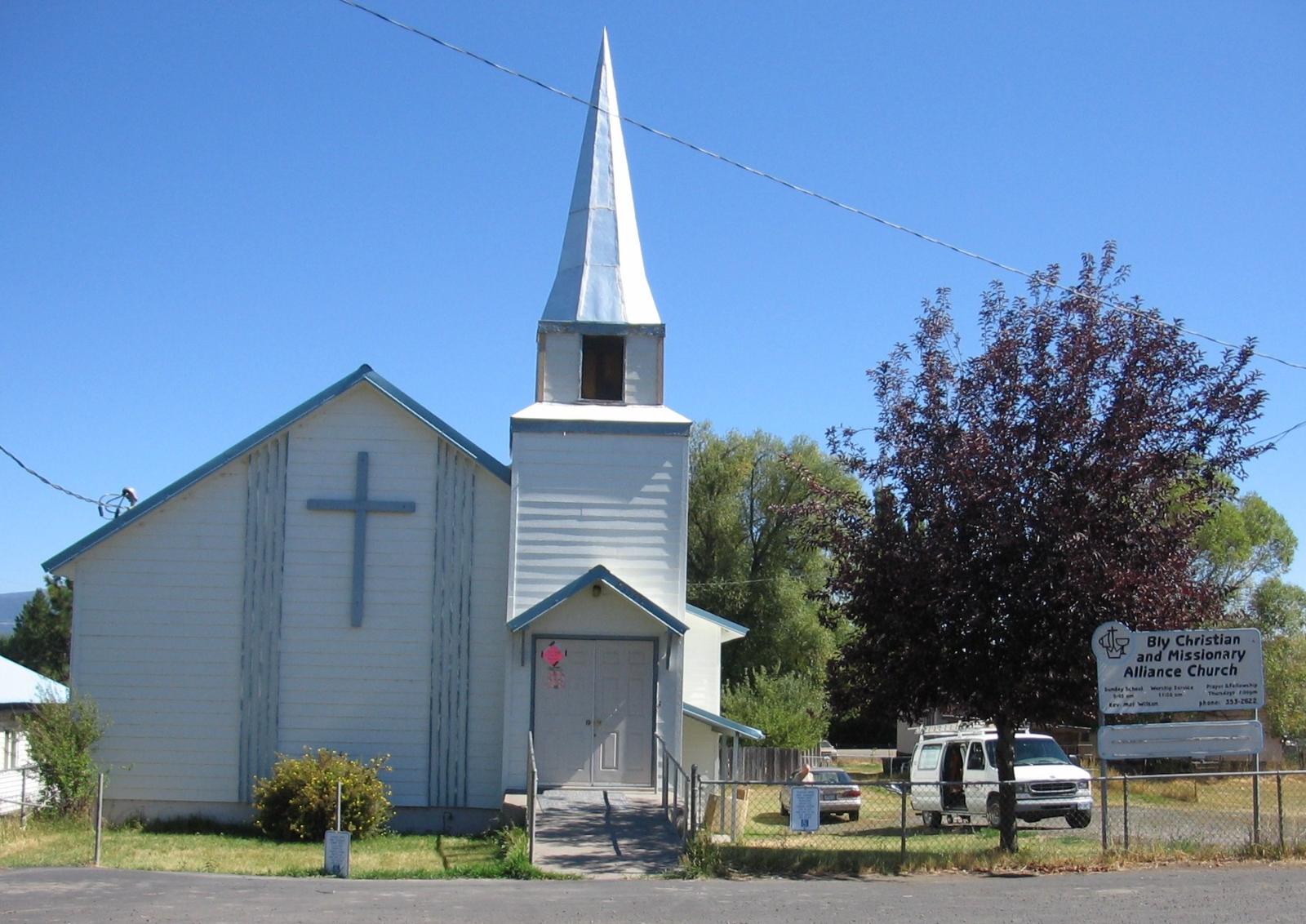
Bly is one of Oregon’s smallest towns, located in Klamath County near the Fremont-Winema National Forest. With a population under 500, it offers deep rural living and access to scenic forest trails, lakes, and wildlife. Historically a timber town, Bly has transitioned into a quiet community favored by off-grid homesteaders, retirees, and buyers looking for space and silence. The large price jumps from 2016 through 2022 reflect new interest in rural land — particularly from remote workers and those seeking isolation during the pandemic. Home prices here skyrocketed by over 28% in 2021 alone. While recent declines have pulled prices back slightly, the current average remains far above pre-pandemic levels, suggesting the demand was not just a temporary blip.
In terms of amenities, Bly is limited — there’s a gas station, a library, a school, and a post office — but it functions as a base for outdoor activity and land ownership. Its housing stock is largely composed of older homes and cabins, with occasional new construction or modular homes added to the mix. For those comfortable with rural challenges and light infrastructure, Bly offers a chance to own property at a relatively low cost. The recent softening in prices may reflect temporary pullback rather than a market crash. Given the town’s enormous growth over the past decade and its enduring appeal to niche buyers, Bly remains an important watchpoint in Oregon’s rural affordability story.
5. Powers – 136.5% Home Price Increase Since 2010

- 2010: $81,704
- 2011: $74,859 ($-6,845, -8.38% from previous year)
- 2012: $70,998 ($-3,861, -5.16% from previous year)
- 2013: $74,097 (+$3,099, +4.36% from previous year)
- 2014: $79,217 (+$5,120, +6.91% from previous year)
- 2015: $81,699 (+$2,482, +3.13% from previous year)
- 2016: $83,742 (+$2,043, +2.50% from previous year)
- 2017: $100,047 (+$16,305, +19.47% from previous year)
- 2018: $108,691 (+$8,644, +8.64% from previous year)
- 2019: $123,880 (+$15,189, +13.97% from previous year)
- 2020: $138,488 (+$14,608, +11.79% from previous year)
- 2021: $165,859 (+$27,371, +19.76% from previous year)
- 2022: $189,387 (+$23,528, +14.19% from previous year)
- 2023: $196,986 (+$7,599, +4.01% from previous year)
- 2024: $194,956 ($-2,030, -1.03% from previous year)
- 2025: $193,285 ($-1,671, -0.86% from previous year)
Home values in Powers have climbed from $81,704 in 2010 to $193,285 in 2025 — a 136.5% increase. The sharpest growth came between 2017 and 2022, when prices rose by over $100,000 in just five years. Recent declines have been small and orderly, suggesting that Powers’ market is cooling but not reversing.
Powers – Rugged Living on Oregon’s Southern Coast
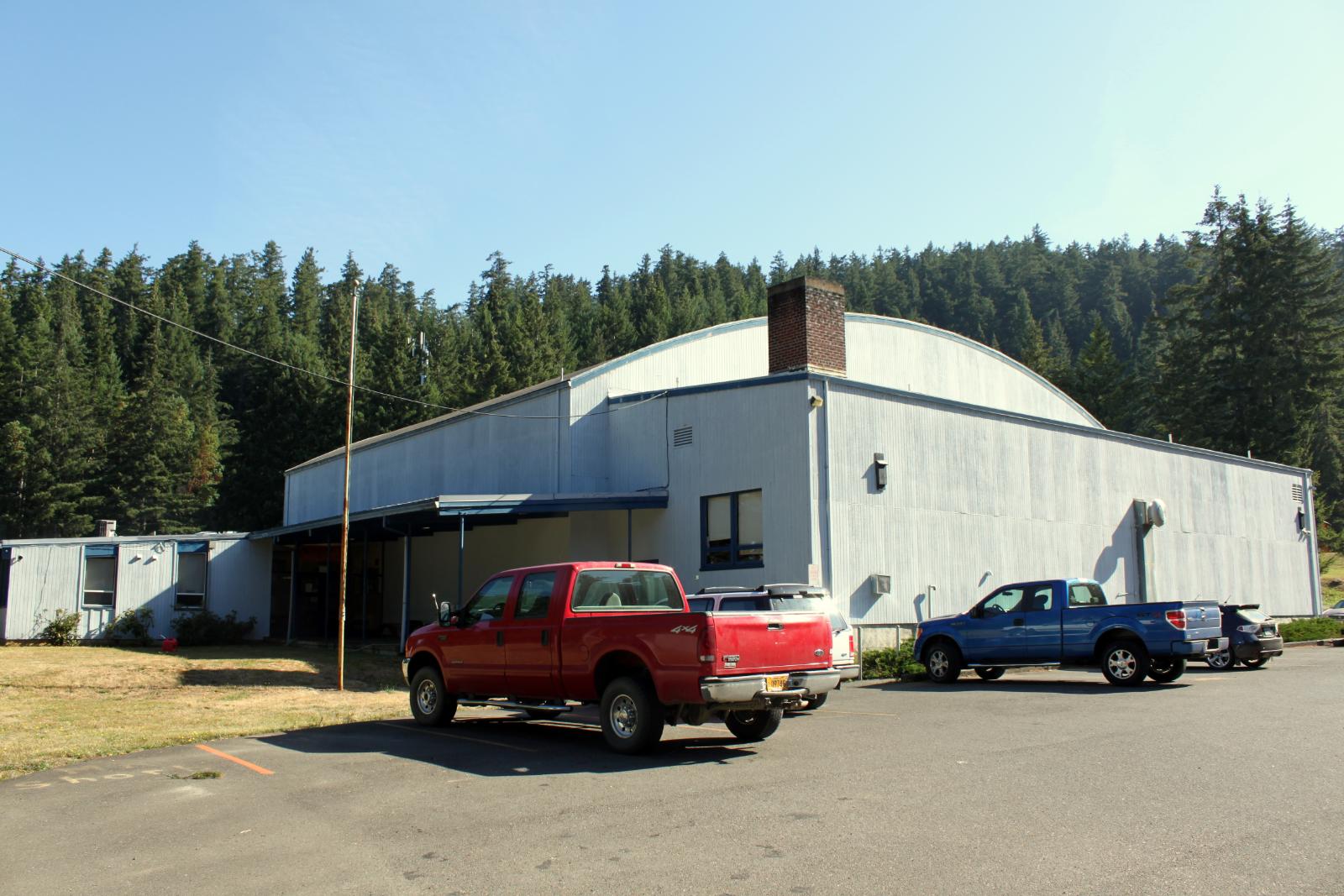
Powers is a small town tucked deep in the Siskiyou Mountains of Coos County, known for its natural beauty, isolation, and timber heritage. With fewer than 1,000 residents, it’s one of the most remote communities on the southern Oregon coast — accessible by a winding drive through forested canyons. But for those who crave solitude and scenery, Powers delivers in full. It’s situated on the South Fork Coquille River and surrounded by thousands of acres of national forest land. While Powers may lack commercial development, it offers fishing, hiking, and hunting just minutes from town. The dramatic home price increases between 2017 and 2022 show how interest in secluded, livable places spiked during the pandemic housing wave.
The recent decline in prices — down about 1.9% since 2023 — indicates stabilization more than a retreat. Powers’ limited inventory means even a few home sales can sway average prices significantly. The town’s housing stock is modest, mostly older single-story homes or cabins, and new construction is rare. Services are minimal, but residents rely on Myrtle Point or Coquille for shopping and healthcare. Still, the draw here is lifestyle: off-the-grid comfort in one of Oregon’s wildest corners. Powers remains one of the most affordable towns in the state, especially given its dramatic long-term appreciation. For buyers who want access to nature and are comfortable with rural constraints, Powers offers unique value with a strong recent performance behind it.
4. Burns – 150.2% Home Price Increase Since 2011

- 2010: N/A
- 2011: $73,205
- 2012: $71,060 ($-2,145, -2.93% from previous year)
- 2013: $74,222 (+$3,162, +4.45% from previous year)
- 2014: $79,637 (+$5,415, +7.30% from previous year)
- 2015: $78,991 ($-646, -0.81% from previous year)
- 2016: $77,685 ($-1,306, -1.65% from previous year)
- 2017: $84,926 (+$7,241, +9.32% from previous year)
- 2018: $94,719 (+$9,793, +11.53% from previous year)
- 2019: $100,829 (+$6,110, +6.45% from previous year)
- 2020: $111,412 (+$10,583, +10.50% from previous year)
- 2021: $142,457 (+$31,045, +27.87% from previous year)
- 2022: $167,566 (+$25,109, +17.63% from previous year)
- 2023: $177,112 (+$9,546, +5.70% from previous year)
- 2024: $180,717 (+$3,605, +2.04% from previous year)
- 2025: $183,148 (+$2,431, +1.35% from previous year)
Burns’ home prices have more than doubled since 2011, increasing 150% from just over $73K to more than $183K by 2025. While price growth has moderated in the past two years, the long-term trend remains one of strong and steady appreciation, especially during the 2020–2022 period.
Burns – A Stable Rural Market With Wide Appeal
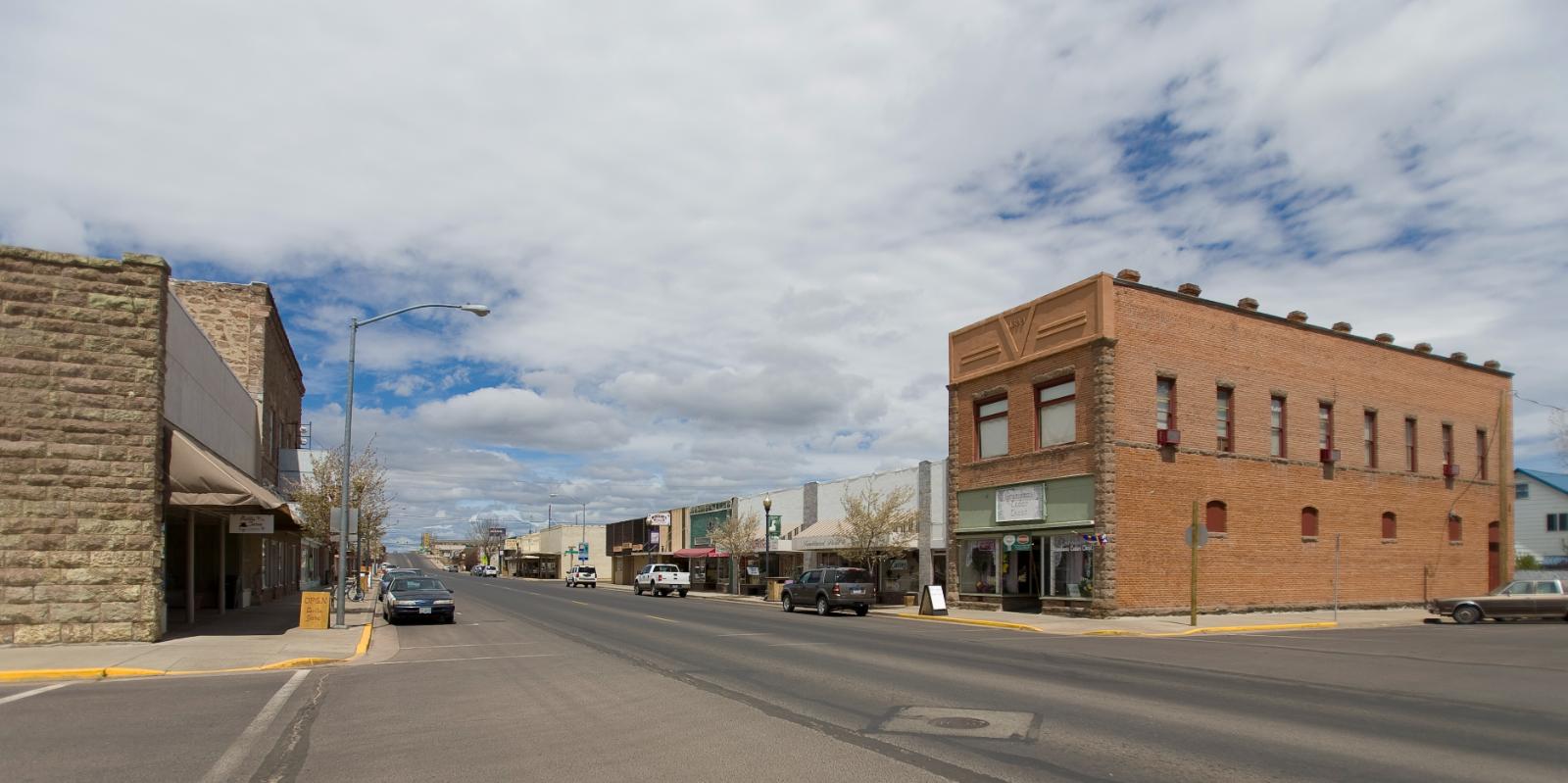
Burns is the county seat of Harney County and one of the few towns in Oregon’s far east with meaningful infrastructure. It has a hospital, schools, grocery stores, and a small airport, serving as a central hub for an otherwise vast and sparsely populated region. While some parts of Oregon’s high desert have struggled to retain population, Burns has remained relevant due to its function as a service center and regional base. The town’s affordability — still under $185K in 2025 — and consistent upward trend have made it increasingly popular with retirees, off-grid enthusiasts, and buyers seeking a simple, budget-friendly lifestyle. Its peak years of appreciation align with the pandemic surge, but its momentum has continued longer than many small towns.
While the town is geographically remote, it offers access to natural wonders like the Malheur National Wildlife Refuge, Steens Mountain, and the Alvord Desert. For people who value space, sky, and minimal development, Burns is a compelling option. The recent leveling off in home values shows that the market is stabilizing after years of high growth, but there’s no sign of a reversal. With strong historical returns and a durable economy tied to agriculture and government services, Burns continues to attract buyers who value long-term affordability over short-term hype.
3. Condon – 124.7% Home Price Increase Since 2014

- 2010: N/A
- 2011: N/A
- 2012: N/A
- 2013: N/A
- 2014: $81,370
- 2015: $84,070 (+$2,700, +3.32% from previous year)
- 2016: $96,238 (+$12,168, +14.47% from previous year)
- 2017: $101,805 (+$5,567, +5.78% from previous year)
- 2018: $111,259 (+$9,454, +9.29% from previous year)
- 2019: $120,073 (+$8,814, +7.92% from previous year)
- 2020: $127,224 (+$7,151, +5.96% from previous year)
- 2021: $151,567 (+$24,343, +19.13% from previous year)
- 2022: $162,424 (+$10,857, +7.16% from previous year)
- 2023: $157,538 ($-4,886, -3.01% from previous year)
- 2024: $161,207 (+$3,669, +2.33% from previous year)
- 2025: $182,911 (+$21,704, +13.46% from previous year)
Condon’s home values have climbed nearly 125% since 2014, with steady increases most years and a strong rebound in 2025 after a small dip in 2023. The latest value — $182,911 — reflects a market that is regaining momentum and offering strong affordability in an overlooked region of the state.
Condon – Quiet Revival in Wheat Country
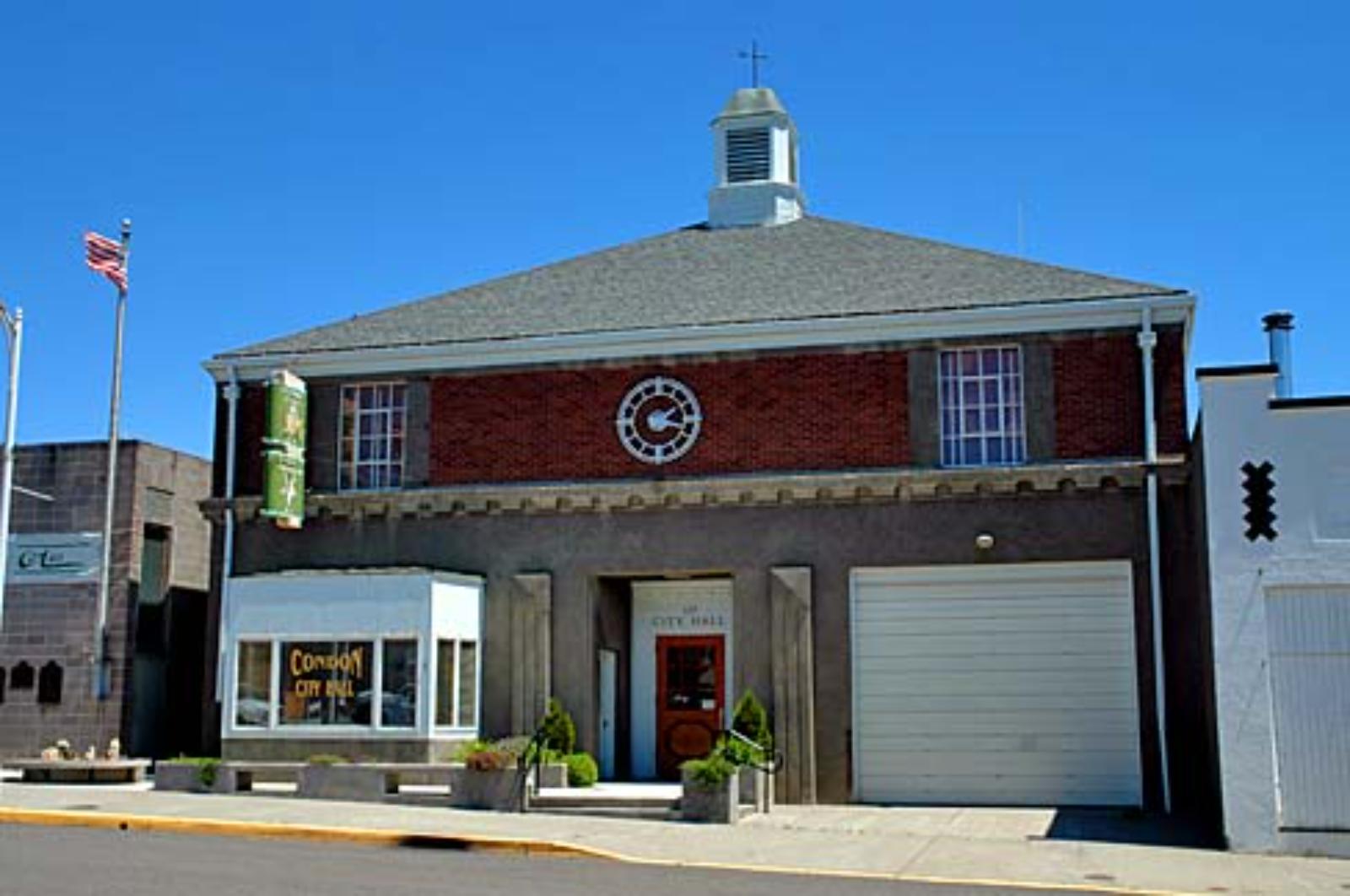
Condon is a small town in Gilliam County, situated in north-central Oregon’s wheat-growing region. With a population of just over 700, it’s the kind of place where community ties run deep and homes rarely change hands quickly. The local economy is anchored by agriculture and county services, with limited commercial development. But in recent years, Condon has seen a quiet real estate revival, driven in part by buyers seeking inexpensive homes in safe, quiet settings. Appreciation has been steady since 2014, with a particularly strong surge in 2025 — a sign that the market is bouncing back after a brief lull. For budget-minded buyers, the town’s current price point under $185K is hard to beat.
Condon’s charm lies in its setting and simplicity. Surrounded by rolling farmland and blue skies, it offers a clean, peaceful lifestyle that’s growing rarer across the state. The town has a grocery store, a K–12 school, and a few historic buildings — including the Liberty Theatre — but it remains unspoiled by commercial sprawl. Its real estate gains are backed not by speculation but by genuine lifestyle demand. For those who don’t need urban convenience and value steady appreciation over flash, Condon offers a unique balance: low prices, real growth, and a small-town feel that hasn’t changed much in decades.
2. Huntington – 7.0% Home Price Increase Since 2023

- 2010: N/A
- 2011: N/A
- 2012: N/A
- 2013: N/A
- 2014: N/A
- 2015: N/A
- 2016: N/A
- 2017: N/A
- 2018: N/A
- 2019: N/A
- 2020: N/A
- 2021: N/A
- 2022: N/A
- 2023: $170,050
- 2024: $184,523 (+$14,473, +8.51% from previous year)
- 2025: $182,003 ($-2,520, -1.37% from previous year)
Huntington only appears in the Zillow dataset starting in 2023, but even in this short window, its home values rose by a net 7.0%. Prices peaked at $184,523 in 2024 before pulling back slightly to $182,003 in 2025. While data is limited, this early pattern suggests moderate but promising growth in an extremely affordable market.
Huntington – Emerging Value Near the Idaho Border

Huntington is a small town in Baker County, located right along the Snake River and the Idaho state line. With fewer than 500 residents, it offers a quiet and remote lifestyle while still maintaining a strategic location along I-84. This accessibility may help explain the town’s recent bump in home prices. Buyers looking for bargain homes close to the Oregon–Idaho corridor have begun to show more interest in places like Huntington, where median values are still among the lowest in the state. The 8.5% jump in 2024 may reflect a few opportunistic sales, and while prices softened slightly in 2025, they remain far above 2023’s starting point. Huntington is a newcomer to the statewide housing conversation, but its early numbers are encouraging.
The town’s appeal lies in its riverside location and low barrier to entry. Homes here are typically older but sit on large lots, and some offer direct views of the Snake River. Huntington lacks some of the amenities found in larger towns, but it does have a post office, a small school, and a handful of businesses. Many residents make the short drive into Idaho for shopping and services, making it a rare Oregon town that functions like a commuter suburb to out-of-state cities. As more buyers search for ultra-low-cost housing near regional job centers, Huntington may see continued interest. Even with minimal data available, its initial price trend positions it as a rising option for cost-conscious buyers in eastern Oregon.
1. Christmas Valley – 7.0% Home Price Increase Since 2024

- 2010: N/A
- 2011: N/A
- 2012: N/A
- 2013: N/A
- 2014: N/A
- 2015: N/A
- 2016: N/A
- 2017: N/A
- 2018: N/A
- 2019: N/A
- 2020: N/A
- 2021: N/A
- 2022: N/A
- 2023: N/A
- 2024: $169,350
- 2025: $181,299 (+$11,949, +7.06% from previous year)
Christmas Valley has the lowest recorded home prices on this list, with a Zillow-estimated value of $181,299 in 2025 — up 7.06% from 2024. While data is only available for the past two years, this rapid appreciation and ultra-low base price mark it as one of the most affordable and potentially fastest-growing rural towns in Oregon today.
Christmas Valley – Remote, Affordable, and on the Radar
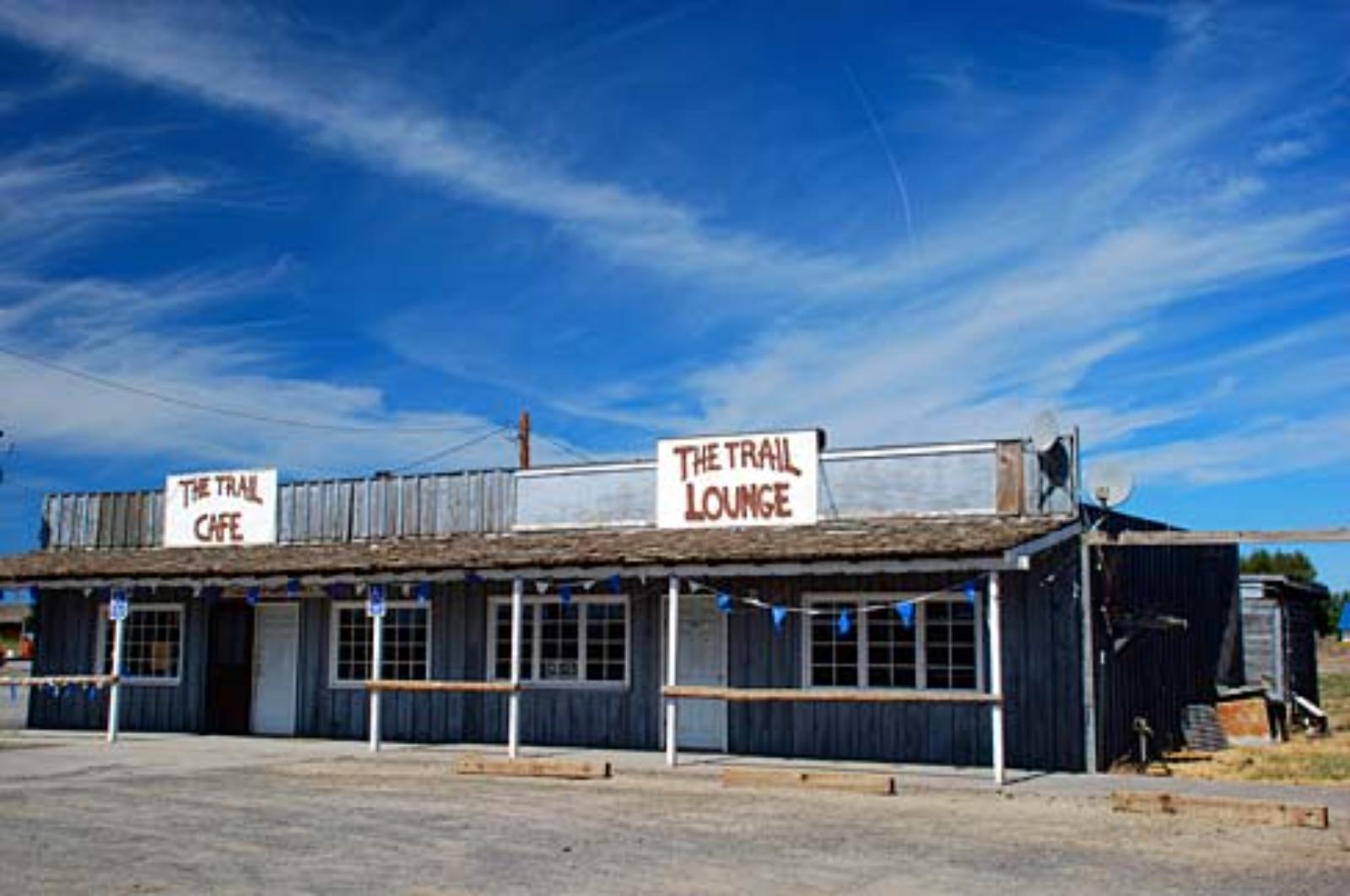
Christmas Valley sits in Lake County’s high desert, surrounded by open plains, volcanic buttes, and ancient dry lake beds. It’s one of the most isolated communities in the state — and also one of the most affordable. With home prices well below $200,000 in 2025, the town attracts buyers seeking off-grid land, wide views, and independence. Much of the town’s real estate is tied to raw land or modular homes, with some buyers using properties seasonally or for recreational purposes. Christmas Valley’s name might be whimsical, but its recent price trend points to real demand. A 7% rise in just one year suggests more buyers are discovering its appeal, especially those priced out of central or coastal Oregon entirely.
Though services are limited — a grocery store, gas station, airstrip, and a school — Christmas Valley holds strategic appeal for rural investors and homesteaders. Its flat terrain and large parcel sizes make it ideal for solar installations, off-grid living, or mobile housing. Recreational opportunities include dune-buggy riding at the nearby sand dunes, hiking around Fort Rock, and birdwatching at nearby wildlife refuges. This town may be Oregon’s ultimate affordability frontier: distant, undeveloped, and growing — slowly but unmistakably. For those looking for the lowest home prices in Oregon with signs of appreciation, Christmas Valley leads the list.




